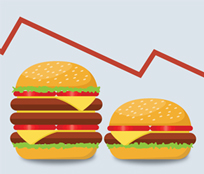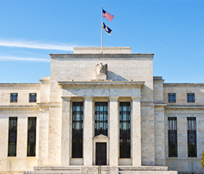Blog
Stay up to date on timely topics and market events. Subscribe to our Blog now.
This week we highlight implications from the final Big Beautiful Bill legislation signed by President Trump on July 4.
Emerging market corporate bonds are currently offering attractive returns and showing resilience in 2025, with metals & mining and Europe leading gains despite ongoing global trade and geopolitical risks.
Nominal retail sales rose in June, but inflation and tariffs kept real consumer spending flat across goods and services, raising concerns about future economic and GDP growth if consumer activity doesn’t improve soon.
Despite a new 50% copper import tariff expected by August 2025, core copper fundamentals remain strong, with resilient demand and stable long-term supply outlooks.
Trump’s proposed 50% tariff on Brazilian imports appears primarily political, with limited direct economic risk but potential implications for US-Brazil trade relations and a possible boost to President Lula’s domestic support.
The jobs report for June painted a softer picture for private-sector employment. Modest job gains and seasonal quirks in public education jobs suggest the labor market is losing some momentum, potentially encouraging the Federal Reserve to consider future rate cuts.
This week we provide a mid-year muni market review.
Consumer spending showed uneven momentum in May as tariffs drove up prices for some goods, services spending stalled and underlying income growth remained strong despite headline volatility.
This week we highlight updated Flow of Funds data from the Fed released this month.
US strikes on Iranian nuclear sites have heightened geopolitical risk, threatening disruption of the Strait of Hormuz, potential oil price spikes, and a shift in energy investment strategies.
In May, global government bond market volatility subsided as improved economic data and lower US-China trade tariffs led investors to reduce the perceived risk of a global downturn.
The Federal Open Market Committee (FOMC) kept interest rates steady amid ongoing economic uncertainty, signaling fewer rate cuts ahead due to persistent inflation risks, tariff impacts and potential energy price shocks.
This week we highlight state and local revenue data released by the Census earlier this month.
Beneath the headline swings, resilient core retail sales highlight steady consumer confidence and the underlying strength of the US economy.
Credit markets are currently stable despite Israel-Iran tensions, but an extended conflict could weaken risk appetite and increase volatility, especially if oil prices surge.
We saw oil futures spiking and market volatility rising following Israel’s strike on Tehran and Iran’s nuclear escalation. While US rates markets have remained steady, energy shocks and geopolitical risks could reshape inflation, Fed policy and emerging market prospects.
May’s inflation data revealed price increases well below the Fed’s 2% target, with easing in both headline and core measures, especially as shelter costs slow.
This week we highlight the elevated supply observed this month (and year).
Latin American central banks are adapting to global market changes by diversifying reserves beyond US dollar assets into corporate bonds and sustainable investments to enhance returns and manage risk.
US job growth in May brought some good news but big revisions to previous job reports and slower hiring in construction kept overall gains in check while wages remained unchanged.
The US housing market is cooling as high mortgage rates and growing inventory slow buyer demand and moderate home price growth, leading us to favor bonds and multi-family real estate.
This week we highlight the 2025 muni market’s underperformance, which has contributed to what we view as attractive relative valuations.
US consumer credit growth and utilization slowed in the first quarter, with rising delinquencies expected later in the year. As a result, we favor high-quality consumer credit investments and remain cautious on subprime assets.
Consumer spending and inflation stayed stable in April, with minor shifts driven by vehicle sales and tariffs, while overall inflation trends remain within the Fed’s comfort zone.
In April, municipal bonds underperformed due to elevated supply and weak demand amid market volatility, even as credit fundamentals remained resilient and after-tax yields improved.
This week we highlight potential municipal market implications arising from the recent House Ways and Means Committee’s tax bill.
Moody’s US credit rating downgrade signals rising fiscal risks and market uncertainty as debt and deficits grow amid political gridlock.
Despite a modest dip and April figures being revised downward, US sales remain strong, with small businesses continuing to drive consistent growth in the retail sector.
Given the headlines about federal funding cuts and the possible elimination of higher education’s tax-exempt status, this week we look at emerging risks in the muni sector.
The US-China tariff pause offers a welcome break in trade tensions, while ongoing discussions about US trade policy, the strength of US Treasuries and the dollar, as well as evolving global capital flows, provide reasons for cautious optimism in the markets.
Amid mixed economic signals and rising global risks, the Federal Reserve (Fed) is holding interest rates steady and staying flexible as it monitors how conditions develop.
This week we highlight state and local payroll conditions following a better-than-expected nonfarm payrolls report.
The US merchandise trade deficit rose by an annualized rate of $566 billion for the first quarter of 2025.
The Spring IMF meetings offered insights into potential frontier market opportunities as investors reconsider regional allocations, political considerations and evolving global macroeconomic dynamics amid tariff uncertainty.
Steady job and wage growth support a stable US labor market, but conflicting economic data cast doubt on the true strength of the goods sector.
This week we highlight evolving tax policy rhetoric that can impact municipal valuations.
Despite a decline in housing starts, new-home sales show unexpected resilience, with builders maintaining production levels amid high inventories and easing home prices.
The March retail sales report shows a rise in consumer spending that may serve as a counterpoint to recession fears.
Municipal bonds experienced negative returns and underperformed taxable fixed-income in March due to heightened market volatility, weaker economic data, and increased supply and demand pressures.
This week we highlight the record volatility observed last week in the muni market and elevated income opportunities.
President Trump’s tariffs heightened global financial market uncertainty, prompting strategic adjustments in our Multi-Asset Credit portfolios to help manage risks and explore selective opportunities.
In March, the Consumer Price Index registered a modest decline, signaling a promising stabilization of inflation. This positive trend appears particularly robust when excluding volatile components such as food, energy and shelter costs, suggesting broader price pressures may be easing across the economy.
Mexico is strategically navigating the complexities of the new US tariff regime, leveraging the USMCA trade agreement to avoid additional tariffs. The country is focused on enhancing domestic production and fiscal responsibility, though sectors such as autos, chemicals and utilities still face significant risks.
This week we highlight traditionally challenged technicals observed during tax season.
In the face of market turbulence and the Trump administration's tariffs, US Treasuries continue to be viewed as safe-haven assets due to their lower volatility and reduced exposure to interest-rate risks, particularly those with shorter maturities.
March payrolls highlight robust job growth and stable wages, offering a positive data point amid recent economic concerns.
Amid falling equities and Treasury yields, US investment-grade credit spreads are widening due to market volatility, trade tensions and recession fears. Our investment outlook favors high-quality issuers and industries with strong balance sheets that have seen spreads widen in sympathy.
After Trump’s tariff announcement, we surveyed our Desk to gather insights and assess the impact on markets, revealing concerns about inflation, growth prospects, widening credit spreads, and significant repricing as investors adjust to the new economic uncertainty.
This week we highlight the shifts in municipal demand observed in 2024.
A slowing in spending on goods and services reflects a softening in wage growth and potential downside risks.
This week we highlight state and local revenue data released by the US Census Bureau earlier this month.
The Federal Reserve opted to maintain steady interest rates and decelerate its balance sheet reduction, reflecting a cautious stance amid economic uncertainties.
This week we highlight historical municipal market reactions to recessionary environments.
A rebound in control sales in February indicates strong consumer demand, countering premature claims of a weakening US economy despite a slight overall decline in retail sales.
The municipal bond market in February saw near-record tax-exempt supply, strong investor demand and attractive after-tax yields compared to taxable bonds.
February’s Consumer Price Index showed a notable cooling in overall inflation compared to January, though an unexpected rise in goods prices amid moderating service costs has created new considerations for Federal Reserve policymakers.
This week we highlight the potential impact of federal austerity measures on the muni market.
February’s jobs report shows moderate private-sector growth amid shorter workweeks and modest wage gains, suggesting economic sluggishness that could influence the Federal Reserve’s rate-cut decisions.
Despite concerns about Trump’s tariffs, US fiscal policy and Federal Reserve actions, we believe that the diverse buyer base and evolving global risks will continue to support strong demand for US Treasuries.
As the short-term muni rate declined nearly 1% last week, this week we highlight the year-to-date disinversion of the muni yield curve.
President Trump’s reaffirmation of tariff policies has led to responses from trading partners, sparking debates about the potential economic impacts and the effectiveness of his approach.
Despite rising delinquencies and low housing turnover, the Western Asset Housing Market Score has risen to 50, primarily driven by a shortage of available homes and strong home builder sentiment.
Economic data for January reveals a dip in consumer spending, a modest rise in personal income and mixed inflation rates, underscoring the complexities and uncertainties of early-year economic trends.
Fannie Mae and Freddie Mac’s exit from federal conservatorship aims to stabilize the housing market while preserving mortgage affordability and liquidity, maintaining government backing of agency MBS and ensuring a safe release from the conservatorship without negative market impacts.
This week we touch on the Illinois budget proposal released last week.
Single-family housing starts declined in January, maintaining steady activity despite regional variations, but excess inventories and higher mortgage rates indicate potential vulnerabilities in the housing market.
Sales decline substantially in a month where prices increased: January price and sales data confound even the most savvy economists.
Municipal issuers raised $37 billion in January with 35% higher inflows than the prior 10-year average January issuance.
This week we highlight positive fund flows amid elevated supply conditions.
Private-sector job growth in January was mainly driven by the health care sector, despite an overall slowdown in job growth across the rest of the economy, indicating that recent upturns are likely statistical noise rather than a genuine recovery.
This week we highlight tax policy rhetoric, which has accelerated following potential proposals put forth by the House Ways and Means Committee.
The Bank of Japan’s cautious interest rate hikes aim to balance price stability with economic risks, while acknowledging potential adverse economic effects. We anticipate further rate increases, driven by concerns over inflation and the depreciation of the yen.
Markets are facing turbulence in 2025 due to Trump’s tariffs on several countries, which are impacting US growth and Fed policy. Multi-asset credit solutions may help investors navigate the uncertainties in today's investment landscape.
The US consumer outlook remains strong, supported by improved labor market data, robust consumer spending and healthy household balance sheets, despite cooling trends from peak pandemic stimulus.
Real GDP grew at an annualized rate of 2.3% in the fourth quarter of 2024, mainly due to strong consumer spending, but declines in business equipment investment and inventories suggest a mixed economic outlook for 2025.
The Fed left rates unchanged today, emphasizing economic resilience, stable labor market conditions and persistent inflation concerns. It also acknowledged the uncertainties posed by the current economic and political landscape, including potential tariff impacts, immigration, fiscal policy and regulatory changes.
This week we highlight the Los Angeles regional wildfires and their potential implications on muni credit.
President Trump’s threat of new tariffs on Colombian goods, following a deportation dispute, highlights his unpredictable tariff strategy. Despite both sides backing off, we see potential implications for emerging markets and global trade.
Muni market yields moved higher across the curve in December 2024, generally underperforming US Treasuries amid rate volatility and weakening supply and demand technicals.
UK gilts may present a compelling investment opportunity for global bond investors due to subdued growth, moderating inflation and potential for more rate cuts by the Bank of England.
Single-family housing starts rose modestly in December 2024, but overall starts have declined from 2023 due to high inventories, rising mortgage rates and hurricane disruptions.
Retail sales in December rose by 0.3%, with consumer-oriented control sales up 0.5%, thanks to strong performance in brick-and-mortar stores. Inflation trends are aligning with the Fed’s 2% target, showing that consumer spending remains strong despite some economic challenges.
This week we highlight key muni-related themes to monitor in 2025.
We believe emerging markets have demonstrated resilience and may be positioned for a potential rebound, despite facing challenges from tariffs, a strong US dollar and higher interest rates.
December’s private-sector payroll increase of 223,000 jobs marks a cautious recovery from hurricane disruptions, highlighting a return to work rather than a genuine job surge.
The Brazilian real experienced significant depreciation in 2024 due to fiscal policy credibility issues, monetary policy concerns and global factors, but it is expected to stabilize as the interest rate differential between Brazil and the US widens and Brazil’s central bank adopts a hawkish stance.
This week we provide a comprehensive 2024 municipal market review.
As the year closes, the US economy is holding steady with the service sector, especially health care, showing growth. Meanwhile, manufacturing and construction face challenges, and recent positive inflation data offers hope for meeting the Fed’s inflation target.
Trump’s tariffs, if implemented, are expected to hinder global growth, particularly affecting Asian export-oriented economies, while also leading to mixed inflation outcomes and modestly negative impacts on Asia’s rates.
The Federal Reserve cut rates by 25 bps today and signaled a “new phase” of monetary policy, with a slower pace of future cuts expected due to higher growth and inflation forecasts and election-related uncertainties.
This week we highlight the release of new Census data on state and local revenues.
Retail sales growth in November was driven by a surge in vehicle sales and strong online shopping trends. Despite a slight decline in brick-and-mortar store performance, overall trends indicate that consumer spending continues to support economic growth.
Muni bonds outperformed taxable fixed-income securities in November 2024, driven by strong supply and demand dynamics, resilient fundamentals and favorable valuations amid volatile markets.
Trump’s policies on tariffs and immigration have the potential to reshape global trade relationships, significantly impacting markets and economies from Latin America to Asia.
November’s inflation report shows rising prices and ongoing pressures, possibly due to recent hurricanes. Easing shelter costs and stable spending suggest the Fed may pause its rate hikes despite a mixed economic outlook.
This week we highlight higher gas prepay issuance trends that have supported the record muni supply seen so far this year.
The fall of the Assad regime in Syria has triggered an unpredictable political landscape with far-reaching geopolitical consequences, including potential escalations in regional conflicts and shifts in global oil markets.
Private-sector payroll jobs rose by 194,000 in November, but overall job growth remains slow, driven mainly by health care and government-supported sectors. Significant downward revisions and a steady decline in household employment may suggest deeper economic issues.
US securitized credit offers investors a range of opportunities for portfolio diversification, attractive yields and enhanced income benefits, presenting an appealing alternative to traditional fixed-income investments.
This week we highlight November’s muni supply slowdown.
In October, real consumer spending experienced a modest increase of 0.1%, largely driven by higher spending on health care services. At the same time, personal income grew by 0.7%, which might have been influenced by the effects of Hurricane Helene.
This week we review market moves as municipal bond supply recovered from US election outcomes and digested potential changes to federal and state tax policy.
While single-family housing starts dipped almost 7% in October, factors like Hurricane Milton and gains from prior months might help explain the decline.
Western Asset responds to investors’ growing demand for customized fixed-income portfolios that break free of benchmark constraints, allowing for better alignment with each client’s risk tolerance and investment goals.
Retail sales saw a 0.4% boost in October, but the more stable control sales measure dipped by 0.1%, showing mixed results possibly influenced by recent hurricanes.
The fall IMF and World Bank meetings offered valuable insights into the resilience and investment opportunities in frontier markets, highlighting structural uncertainties and evolving global macroeconomic dynamics.
The US Consumer Report Card for 3Q24 shows a brighter outlook with an overall grade of B+, thanks to better job market data and strong spending, even though things have cooled a bit from the pandemic highs.
Western Asset CIO Michael Buchanan discusses how Trump’s re-election is likely to impact the bond market due to changes in economic policies, including tax cuts, deregulation and protectionist trade measures.
Muni yields surged in October, driven by record-high municipal supply, robust demand, consistently low default rates and attractive after-tax yield benefits compared to taxable bonds.
The Fed cut rates by 25 bps today and concluded that future monetary policy decisions will be guided by incoming inflation and labor market data, with expectations of continued progress towards the Fed's inflation target.
Central bank reserve managers are increasingly turning to fixed-income investments, particularly US dollar-denominated assets, in an effort to enhance portfolio diversification and capitalize on improving global financial conditions and stabilizing geopolitical risks.
Here we explore how a second Trump term could impact emerging markets by reshaping trade policies, altering geopolitical dynamics and influencing asset price movements.
This week we highlight ballot initiative trends at the state and local levels.
Private-sector payroll employment dropped by 28,000 in October with big downward revisions for August and September, possibly due to recent hurricanes; a strong job growth rebound would confirm hurricane impacts, while ongoing weak growth might point to broader economic issues.
As the US presidential election approaches, agency mortgage-backed securities (MBS) may present an attractive investment opportunity due to their strong fundamentals, relatively favorable spreads and possible benefits from policy changes under different election outcomes.
Real GDP growth of 2.8% in 3Q24, alongside stable nominal GDP growth and controlled inflation, suggests that the Fed’s policies have been effective in maintaining economic stability, despite sector-specific variations in production and spending.
This week we highlight potential election implications of municipal securities subject to the Alternative Minimum Tax (AMT).
Despite ongoing US Treasury volatility and global political uncertainties, the credit market remains resilient supported by strong corporate balance sheets, accommodative global financial conditions and proactive central bank policies.
The American retirement landscape faces challenges like insufficient savings and the uncertain future of Social Security, highlighting the need for thoughtful policy adjustments to ensure sustainable retirement income and benefits.
Despite a recent uptick in new-home sales and single-family housing starts, high inventory levels and downward revisions indicate potential challenges for the homebuilding market.
This week we highlight potential corporate tax policy implications of the upcoming election.
Retail sales surged by 0.4% in September, with control sales jumping 0.7%, showcasing resilient consumer spending despite economic headwinds and hinting at a potential pause in aggressive Federal Reserve rate cuts.
The third quarter of 2024 experienced a notable decline in 30-year mortgage rates driven by the Federal Reserve's rate cut, yet housing affordability remains a challenge due to persistently high home prices.
In September, the municipal bond market saw positive returns for the fourth consecutive month, driven by the Fed’s half-point rate cut. However, the muni market continued to underperform other high-quality fixed-income assets due to elevated supply conditions.
This week we highlight potential individual income tax policy implications of the upcoming election.
September’s CPI showed higher core inflation, potentially due to strike and hurricane impacts, while shelter costs unexpectedly moderated, highlighting the complexity of measuring homeowners’ costs in inflation data.
This week we highlight muni exposure to climate risks following the damage caused by Hurricane Helene.
September’s private-sector payrolls surged by 223,000 jobs, with notable gains in health care and restaurant sectors, while average hourly wages rose by 0.37%, potentially challenging expectations for further Fed rate cuts.
Following the Fed’s rate cut last week, we highlight the municipal market reaction to prior rate-cutting cycles.
Recent global economic shifts, including central bank rate cuts, China's stimulus measures and Saudi Arabia's oil strategy change, are likely to boost investor sentiment and asset prices despite slowing global economic activity.
September 27, 2024
ECONOMY
Following a 50-bp cut by the Fed, inflation appears in check amid strong services spending and soft goods spending.
China has unveiled a significant economic support package including monetary easing and market interventions to boost growth and stabilize markets, but these measures may not fully address complex economic challenges or match the scale of previous stimulus efforts.
September 25, 2024
INVESTING
Proposed regulatory changes in Australia could impact the country’s hybrid securities market, and diversified fixed-income and credit strategies may offer investors a better alternative for generating defensive income.
Following the Fed’s rate cut last week, we highlight the municipal market reaction to prior rate-cutting cycles.
Treasury Inflation-Protected Securities (TIPS) can offer attractive value as inflation expectations trend lower, with real yields above historical averages and breakeven inflation rates nearing Fed targets.
As global inflation eases and central banks shift toward rate cuts, bond yields are expected to remain low, potentially creating attractive opportunities in high-yield corporate credit, bank loans, CLO tranches, structured credit and emerging market debt.
The Fed cut interest rates today for the first time since 2020, lowering the fed funds rate by 50 basis points, citing progress on inflation and balanced economic risks, while projecting additional cuts for 2024.
This week we provide an update on state and local tax collection estimates released last week.
Despite worries about a slowdown, August retail sales held strong with a 0.1% rise in headline sales and a 0.3% boost in “control” sales, thanks to gains in drug stores and online shopping. Meanwhile, everyone is eagerly awaiting the Fed’s rate decision tomorrow.
Learn how Climate Resilient Debt Clauses (CRDCs) are changing sovereign debt contracts. We believe these innovative clauses integrate climate risk, boost financial resilience and promote sustainability in vulnerable countries.
Core inflation excluding housing remains low, but elevated shelter costs pose a dilemma for the Federal Reserve’s monetary policy decisions.
As muni mutual funds record a 10th consecutive week of inflows, we highlight the implications of an inflow cycle in the muni market.
Slowing job growth outside Covid epicenter sectors, coupled with downward revisions in job counts, highlight imminent needs for a September rate cut.
US consumer spending rose 0.4% in July, outpacing income growth and pushing the savings rate to 2.9%, surprising analysts who expected a pullback and potentially influencing the Fed's upcoming rate decision.
The Western Asset Consumer Report Card introduces a new quarterly assessment of US consumer financial health, analyzing seven key economic indicators to provide insights for investors.
This week we touch on Vice President Kamala Harris' new tax plan.
Divergent trends in new-home sales and construction during July suggest builders may be tackling excess inventory, potentially disputing claims of a widespread housing shortage.
Following the July payrolls report and as we approach Labor Day, this week we highlight state and local payroll trends.
As Claudia Sheinbaum is about to become Mexico’s President, we are closely monitoring her potential energy and utility policies, considering AMLO's populist legacy and Morena’s congressional supermajority.
July's retail sales rose 1.0%, with core sales beating expectations at 0.3%, suggesting steady consumer spending and potentially delaying any Federal Reserve rate cuts.
This week we touch on municipal performance during past recession periods.
This week we touch on the record tax-exempt muni supply observed this year.
Here we discuss the major factors driving significant global market volatility and how these forces are compelling investors to reassess their portfolios. Western Asset’s active management approach aims to navigate these turbulent conditions by identifying mispricing opportunities across fixed-income asset classes.
Nonfarm payrolls grew by just 114,000 for the month, down from the downwardly revised 179,000, and private-sector payroll jobs rose a scant 97,000 in July, setting the stage for a near-term Fed rate cut.
The Federal Reserve holds rates steady and signals a potential September rate cut amid a shifting economic landscape and balanced risk assessment.
This week we highlight recent yield curve reversion and the potential implications for muni investors.
Real GDP surged at a 2.8% annualized rate in 2Q24, driven by robust business investment and motor vehicle production, while easing inflationary pressures suggest sustained economic stability.
This week we highlight pension funding improvements.
Here we examine how Biden's potential withdrawal from the 2024 presidential race could reshape Democratic leadership dynamics and trigger market volatility, impacting Treasury yields, US dollar strength and emerging market assets as investors reassess economic policy expectations.
Despite challenges from high mortgage rates, the US housing market is holding steady in 2024, with home prices still growing modestly even as buyers and sellers navigate a changing landscape.
The 2024 US presidential race raises concerns for investors regarding potential impacts on emerging market assets, particularly if Trump's proposed trade policies are implemented.
This week we present an update on the transportation sector as we enter the summer travel season.
As global central banks begin to cut rates, investors may want to explore hidden opportunities across various credit sectors—including high-yield corporate bonds, bank loans, structured credit, investment-grade credit and emerging market debt—to potentially capitalize on attractive income and total return prospects.
June’s CPI declined by 0.06%, following a 0.2% increase in May, driven primarily by a sharp drop in energy prices and a decrease in core CPI, excluding shelter costs. This broad-based moderation in inflation could potentially justify future Fed rate cuts.
This week we provide a mid-year market update for muni investors.
With job growth having fallen to rates slower than what we saw pre-Covid, with much of that growth centered in health care, and with wages and total hours worked also slowing, we likely are at a point where further softening would connote actual weakness … in which case it might be time for the Fed to start cutting.
Weakening consumer spending and easing inflation in May bolster the case for a Fed rate cut, as core inflation excluding shelter hits the Fed’s 2% target.
Monetary policy tightening is straining credit markets, especially for smaller firms, potentially signaling recession; however, this environment may offer CLO equity investors improved margins and opportunities for enhanced returns.
Despite stable new-home sales, there is a concerning gap between single-family housing starts and sales, suggesting potential oversupply and future challenges for homebuilders.
This week we provide an update on state and local tax collections.
Sukuk, or Islamic bonds that comply with Shariah law, are experiencing growth in their use for financing, especially for infrastructure and green projects, although potential risks exist and regulatory standardization is needed for the market’s continued expansion.
Recent retail sales data is showing signs of consumers tightening their spending in 2024 across most shopping categories after a stronger rebound last year, which could point toward a slowing economy ahead.
This week we discuss Federal Reserve municipal holdings data, highlighting shifts in municipal bond demand.
Mexico’s new president, Claudia Sheinbaum, will need to balance investor concerns over potential constitutional reforms with fulfilling promises to her base, while also pursuing opportunities presented by nearshoring trends that benefit the country.
May’s flat consumer prices with low core inflation, especially when excluding shelter costs, signal that the Fed will likely consider rate cuts in the months ahead.
The Fed maintained its data-dependent approach, suggesting inflation and employment trends could prompt rate cuts later this year.
This week we highlight the robust municipal issuance observed this year.
As Narendra Modi is poised for a third term as India’s Prime Minister with backing from allies, India's markets rallied on expectations of continued economic reforms and fiscal prudence. The country’s bond market now anticipates inflows after getting included in a major global index.
Private-sector payroll jobs surged by 229,000 in May, with significant gains in Covid-affected sectors like health care and restaurants, despite a slight downward revision to April's jobs estimate and a rise in the unemployment rate to 4.0%.
The European Central Bank vows to remain data-dependent, which in our view is likely to precipitate further easing in the third and fourth quarters that should buoy euro area bonds.
This week we highlight the Illinois budget that was passed last week.
Consumer spending slowed in April with continued goods declines and stagnant services spending. Despite easing inflation, the broad softening coupled with low consumer savings and high debt levels signals a potential downtrend risk.
New single-family home sales dropped sharply in April, signaling potential declines ahead in homebuilding that could weigh on economic growth.
This week we highlight a muni supply bill proposed last week in the US House of Representatives.
The South African election outlook favors policy stability, as an ANC victory or coalition government would likely maintain the country’s attractive high real yields, which should make local bonds an appealing investment opportunity.
Western Asset believes emerging market assets may provide attractive opportunities in 2024 following the Fed's last rate-hiking cycle and sees potential upside in Mexican local bonds due to factors like high yields and potential supply chain shifts.
Today’s inflation data, which shows progress in taming core inflation along with sluggish retail sales, bolsters the case for a summer Fed rate cut, provided inflation keeps decelerating and consumer spending doesn't rebound sharply.
This week we highlight tobacco consumption data released last week and its impact on the muni tobacco sector.
Investors should monitor Panama’s economic landscape as newly elected President José Raúl Mulino grapples with stimulating growth, addressing fiscal and pension deficits, and renegotiating the halted Cobre Panamá mine project amid a divided congress, which may sway business confidence and market stability.
Sovereign debt sustainability requires assessing countries’ climate policies and enabling investment vehicles tied to economy-wide targets, rather than following the project-based approach used for corporate debt.
This week we highlight drivers of challenged muni performance during the month of April.
Early financial market comments on the release referred to a “weak” jobs report. This is not really true with respect to the headline payroll gains. In any case, the breadth of today’s data is once again consistent with declining inflation.
This week we highlight potential challenges faced by popular municipal ladder strategies.
Here we explore the key factors influencing the 2024 oil markets, including geopolitical events, global elections, supply and demand trends, and the implications for energy investments.
Our take has been that despite all the hubbub about the economy’s strength, nominal GDP growth has been decelerating steadily; real GDP growth is a bit more puzzling.
Here we explore how 2024 elections in Mexico and India may affect global economic trends, trade stability and international relations, with a focus on the potential impact to emerging market (EM) investments.
This week we highlight themes from the New York state budget passed over the weekend.
Amid low interest rates and market volatility, Latin American institutions are turning to money market funds due to their attractive yields, liquidity and capital preservation advantages.
Western Asset’s Housing Market Monitor assesses critical aspects of supply, demand, pricing and mortgage stress in the US housing market to offer investors insights into prospective home price trends and the residential mortgage-backed securities sector's potential opportunities or risks.
This week we highlight key tax themes we are monitoring around Tax Day.
Retail sales appeared to soften in January and February, but today’s report obliterated that apparent softness. We thought consumers were over-extended, but there is no indication of this in today’s news.
Given today’s CPI release, shelter remains a major puzzle—and is a major sticking point for the inflation data. Here are our thoughts, and our questions.
This week we highlight the increasing call activity associated with taxable Build America Bonds (BABs).
This was easily the cleanest jobs report we have seen since 2022. Here’s our breakdown of the numbers.
Active management in emerging market (EM) debt can generate alpha and outperform passive investments due to the idiosyncrasies and inefficiencies present in the asset class.
We thought consumer spending trends were moderating. Instead, as in a game of whack-a-mole, moderating goods spending has been offset by jumps in services.
A renewed US-China trade war under a potential second Trump presidency could disrupt global growth, financial markets and supply chains through aggressive tariff measures against China and other trading partners.
This week we highlight state and local revenue estimates released last week by the US Census Bureau.
In a historic shift signaling gradual policy normalization amid rising wages and inflation, Japan's central bank ended its long-standing negative interest rate and yield curve control policies, a move Western Asset believes will put upward pressure on Japanese government bond yields.
Declining net worth of floating-rate credit issuers presents a risk of higher defaults unless asset values rise, creating potential headwinds for the economy but opportunities for active credit investors.
The Fed’s policy announcement today hints at a potential desire to maintain a lower profile and avoid surprising markets during this election year. Our view is that the Fed is likely to initiate policy actions over the summer to sidestep any perceptions of unduly influencing voters.
This week we highlight wealth trends from recent IRS data.
We believe Western Asset's time-tested approach of combining long-term fundamental value investing with dynamic risk management is well-suited to position global bond portfolios through turbulent periods.
It is simply impossible to tell for sure at this point whether the January/February softness indicates an incipient downshift in consumer spending or just statistical noise. Here’s our take.
Western Asset's proprietary Housing Market Monitor Score evaluates key supply, demand, pricing and mortgage stress factors in the US housing market, providing investors with valuable insights into potential future home price movements and opportunities or risks in the residential mortgage-backed securities sector.
This week we highlight historical performance prior to and following historical fed funds rate cuts.
Private-sector payroll employment rose by 223,000 in February, but there was a massive, -204,000 revision to January data. This jobs report was very much a mixed bag for bulls and bears on the economy.
Here we make the case for why we believe emerging market investment-grade bonds could be a compelling relative value allocation for investors.
This week we highlight key takeaways from the beginning of budget season.
The Bank of Japan (BoJ) has signaled a potential future shift toward less accommodative monetary policy. Here we discuss the key economic metrics and whether the timing and extent of the BoJ’s policy shifts are likely to provide adequate economic support.
Capital spending—and manufacturing activity in general—is one area that has clearly softened as interest rates have risen. Not only is equipment investment declining steadily, but manufacturing output is as well.
February 27, 2024
MARKETS
This week we highlight the deteriorating supply trends in the taxable muni market.
Frontier markets prove detractors wrong with a resurgence after a troubled 2022, as the primary market shows renewed appetite for frontier issuers.
January retail sales figures released today showed a -0.8% decline in total sales and a -0.5% revision to the December estimate. Maybe the spending spree that began in July began to sputter in January, maybe the reported declines are just a seasonal blip?
This week we highlight diverging valuations between top-quality munis and credit-oriented counterparts.
This week we highlight active versus passive muni fund performance and the structural benefit of active management within the muni market.
Today’s January payroll news is so beyond the pale that it is wise to wait and gain some perspective before commenting further. Here are our observations in the meantime.
Robust growth in the asset-backed securities (ABS) market highlights the strong fundamentals of US consumers, suggesting a positive economic outlook for 2024.
Ahead of this week’s nonfarm payroll report, we highlight recent state and local employment trends.
Real GDP is reported to have grown at a 3.3% annualized rate in 4Q23, while the GDP price index shows a 1.5% annualized rate of inflation. Elsewhere, growth was a bit below our expectations. Here’s how we slice it, and why we think inflation will remain restrained.
This week we highlight drivers of underperformance in the muni market so far this year, which have countered the traditionally strong “January Effect.”
The Fed has expanded and contracted its balance sheet over the past decade, using quantitative easing to purchase US Treasuries and mortgage-backed securities, and quantitative tightening to sell assets. Here we discuss how these actions have impacted the level of bank reserves and broader financial market liquidity.
US investment-grade credit historically has posted strong total returns after the Fed concludes a tightening cycle and prepares to ease policy—is this what we can expect ahead?
This week we highlight key market themes we’re tracking for muni investors in 2024.
Overall, there are no meaningful signs of softening consumer spending in today’s data, quite the opposite. Here’s how we see it.
Even with the somewhat higher December print, the average annualized inflation rate for core CPI excluding shelter over the last seven months is only 1.3%—way below the Fed’s 2% inflation target. Here are the details on the latest inflation data, along with our take.
While cash-equivalent rates may look attractive today, there’s much evidence to suggest that bonds may be a more attractive choice over the longer term.
This week we recap 2023 muni performance and market trends.
Labor market activity is not weak, but we would assert that it is not as strong as the headline job growth data would suggest, and the apparent deceleration in job growth bears watching.
Today’s data suggest a slight, incipient parting of the ways between goods and services spending. One month doesn’t make a trend, so it is way too early to jump on today’s data for services, but the softer pattern there in the November release bears watching.
This week we highlight 3Q23 state and local revenue estimates released by the Census last week.
Ironically, recent sales growth resurgence has occurred with job growth and wage growth slowing. That sales growth rebounded in the summer and has continued at a decent pace since then has been a surprise to this analyst and others.
As the Fed left interest rates unchanged at today’s FOMC meeting, the conversation understandably turned to the prospect of rate cuts, and in particular to the potential timing of cuts in 2024. We think the discussion of rate cuts is usefully framed as whether interest rates need to be so high.
This week we highlight Federal Reserve muni holders data released last week.
While interest in environmental, social and governance (ESG) investing may be waning according to recent media headlines, our analysis shows continued investor demand and issuer commitment.
Yes, there are elements to today’s payroll report that led some analysts to tout a “strong” report. However, looking at both the effect of worker strikes and the revised data, the story is a bit more complex. Here’s what we see.
Softer growth, declining inflation and expected central bank rate cuts in 2024 set the stage for further downward pressure on global bond yields.
With inflation moderating and expectations for Fed easing ahead, investors might want to consider the benefit of securing today’s fixed-income yields through near-term corporate bonds.
This week we highlight record performance of munis observed over the month of November.
Income growth was soft and PCE inflation was softer, but consumer spending grew decently. Here’s how we account for this.
Usually when durables orders swing down or up by such a large magnitude in one month, the swing is dominated by downs or ups in aircraft orders. This was indeed the case with today’s release. Here are the details.
This week we highlight diverging municipal bond flow dynamics seen so far this year.
Emerging market (EM) corporate bonds have shown an ability to weather volatility, offer resilient yields and provide diversification, which we believe makes them an appealing component for fixed-income portfolios.
Retail sales changes released today were softer than what we had seen in preceding months, but perhaps the bigger surprise is that there were no noticeable sales declines.
This week we highlight recent record trading activity among muni investors driven by late-year tax-loss harvesting.
Despite emerging markets confronting challenges posed by contrasting growth outlooks and policy trajectories, we believe their recent lagging returns could offer an attractive entry point for investors.
With credit markets showing resilience amid volatility since 2022, here we discuss why we believe uncertainties are fading.
This week we highlight election day implications for municipal bonds.
Here we discuss three reasons why we believe collateralized loan obligation (CLO) equity may be undervalued: optionality, structural advantages and relative collateral.
To our minds, the October payroll data were a return to the trends seen over most of 2023, after a bounce to the upside in September, and here’s why we think today’s report will strengthen the case for the Fed halting its rate hikes in FOMC meetings to come.
This week we highlight the impact Treasury rate volatility can have on the municipal market.
We believe the concerns over rising US deficits, growing debt burdens and decreasing demand for US Treasuries are somewhat overstated. In our view, these factors are not likely to substantially threaten America's financial strength or lead to sustained high interest rates over time.
The pace was markedly faster than the 2% growth occurring over the previous four quarters, but it was slightly lower than some financial market analysts had predicted. Here are the details.
This week we highlight seasonally high muni supply levels observed in October, offering investors attractive entry points.
With real incomes flat, with saving rates extremely low, with consumer interest rates up sharply, and consumer borrowing slowing, we have been expecting consumer spending activity to slow markedly.
This week we highlight a key driver of challenged municipal demand this year: competition from nominal cash yields.
Against a fast-changing backdrop, emerging markets (EM) may be an attractive source of returns for fixed-income investors. Here we discuss why we think EM presents a compelling story.
As interest rates climb, corporate bond issuers face increasing pressure on their finances. Here we discuss how higher rates also pose risks that could reverberate across credit markets.
Here we discuss why we believe frontier markets have the potential to offer compelling investment opportunities. However, their complexity demands rigorous country-specific analysis to manage default risks shaped by unique political and economic contexts.
Today’s data will make for an interesting Fed decision. Will it look at the trend of slowing job growth, or will it focus on the much stronger September job gains? Will it look at the apparent trend of wage growth around 4% so far this year, or will it focus on the more modest wage gains of August and September?
While the consensus market outlook has shifted, US Treasuries don’t appear to be following along. Here we explore what’s happening in the US Treasury market.
This week we highlight recent elevated supply, and relative value within the gas pre-pay sector.
It’s been a busy two days! GDP growth is now estimated to be a little slower over the last year than previously estimated, ditto for consumer spending and recent data supports the assertion that a 2% inflation rate is unattainable. Here’s our analysis.
This week we highlight state and local revenue data released from the Census and what it means for muni investors.
Here we discuss Indian bonds, which present investors with a unique opportunity as India’s bond market is underpinned by strong fundamentals, attractive valuations and positive technical tailwinds.
This week we highlight details from the city of Chicago budget forecast released last week and its implications for municipals.
Data for August were released today by the U.S. Census Bureau, and the details within the report are every bit as chaotic as the mix of rising permits and falling starts would suggest. We’ll try to make sense of things here.
Even with July revisions and August softness, retail sales growth shows better performance over recent months than in 2022 and early-2023. It’s just that a bit of the “bloom on the rose” has faded with today’s data.
As the Federal Reserve just released its flow of funds data on September 8, this week we highlight changes in muni demand and the market liquidity landscape.
On a number of fronts, today’s employment report offered encouraging news to financial markets, even if bond investors, for now, think otherwise.
Today’s data from the Bureau of Economic Analysis do not seem a good parlay so far as financial markets are concerned. Here’s why.
August 29, 2023
MARKETS
Ahead of the Labor Day holiday, this week we highlight the state of muni payrolls. While national nonfarm payrolls remain well-above pre-pandemic highs, state and local payrolls continue to lag pre-pandemic levels by 1.3%.
Today in Jackson Hole, Fed Chair Jerome Powell reaffirmed his well-communicated views that monetary policy is now restrictive and he expects it to remain so until inflation declines further. In our view, his remarks suggest there may be considerable value in the bond market at current yields.
Both new-home sales and single-family starts have been trending higher this year, something that was not in our forecast at the start of the year. It’s a tale of two sectors, with data for existing-home inventories and the new-home market apparently conflicting. Here’s what we make of it.
This week we evaluate negative net supply trends that took place over the summer and helped insulate the municipal market from the rate volatility that affected other fixed-income asset classes.
Here we discuss the recent steepening of the US Treasury yield curve, and what it might mean for investors in the months ahead.
This week we highlight elevated Texas Permanent School Fund issuance which underscores supply dynamics that contribute to opportunities for active management.
Evidence of a meaningful response to Fed tightening is hard to find. This doesn’t mean such a response is not coming, but the retail sector has clearly held up better and longer in the face of higher interest rates than we expected.
Granted, two months of satisfactory prints are most likely not enough for the Fed, but there is no reason to think that the Fed will wait for 12 months of benign data before pausing or reversing its rate hikes. Here’s our thinking.
This week we evaluate the muni market reaction to the US downgrade by Fitch Ratings.
Private-sector payroll jobs and total nonfarm gains sound decent, and various financial market analysts will describe them as such. Keep in mind, however, that there are some less favorable elements to the data lurking underneath.
On the heels of Fitch’s US credit rating downgrade, here we discuss how the ratings work for money market funds.
August 02, 2023
REGULATORY
Here is our initial assessment of the impact that Fitch’s rating downgrade of US credit may have on fixed-income investments.
This week we evaluate the year-to-date municipal default rates.
With inflation continuing its downward trend and many central banks approaching the end of their tightening cycles, here we provide an update to our outlook for global bonds.
This week we highlight the New York Metropolitan Transportation Authority’s (MTA) recently released budget and fare increases.
Here we highlight the recent investment activity of central bank reserve managers in Latin America, which may also be relevant to actions taken by other central bankers around the world.
Last week the SEC released major changes to Rule 2a-7, the regulations governing money market funds. In this post, we summarize the main elements of the reforms and weigh in on their potential impact.
This week we highlight the supply slowdown in the taxable muni market.
June sales gains were decent, better than what we had generally seen in preceding months, but not substantially so.
CPI inflation came in at 0.2% for headline and core aggregates, and was right in the Fed’s target range. One month doesn’t make a trend, but one month’s data coming in favorably is better than a kick in the head, and inflation data actually look even better than the “headline” figures.
This week we recap muni market performance drivers from the first half of the year.
On top of a below-expectations tally, there was a sharp downward revision to previous months’ job counts. No, labor markets aren’t cratering, but there is clearly a slowing trend in the data.
With May consumer spending coming in flat and several revisions to March and April figures, we’re looking at a very mixed bag. Here we drill down on the underlying components of the spending data.
This week we highlight recently released 1Q23 state and local revenue data that show a rare decline in overall revenues.
Total housing starts rose by 21.7% in May, and starts of single-family units rose by 18.5%, following slight declines in April. This was a much stronger performance than we were expecting.
With the Fed’s decision last week not to increase the target fed funds rate for the first time since the start of this hiking cycle, here we evaluate historical performance of munis versus other asset classes following the final Fed hike.
Today’s release says headline sales rose by 0.3% in May, but in real terms, adjusting for inflation, both headline and control sales declined in May.
Insurers that add asset-backed securities (ABS) to their portfolios can benefit from risk diversification and a more capital-efficient way to manage their portfolios than using investment-grade corporates alone.
With todays’ announcement that the Federal Reserve (Fed) will keep rates on hold for now, many are already anticipating hikes at future meetings. But we think that distracts from the realities of the long-term outlook.
This week we highlight divergent demand trends within the municipal market.
UK Consumer Price Index headline numbers don’t tell the full story about inflation. Here we discuss our assessment of the latest inflation readings, as well as our expectations for what may lie ahead.
Data released today by the Census Bureau showed a deterioration in foreign trade for the US in April. Though the trend is downward, we think the large decline may be overstated—here’s why.
This week we highlight the progress of ridership recovery trends across the municipal transportation sector.
Labor markets turned in another month of healthy growth, with private-sector payroll jobs rising 283,000, boosted by a +23,000 revision to the April estimate. We’ve been projecting job growth would soften as reopening momentum waned and effects of Fed tightening bit in but we’re still waiting for that development.
There was much significant data released today. We cover consumption and inflation first, then finish up with the income data and how the landscape looks from here.
This week we highlight the IRS expansion of the Texas Permanent School Fund (PSF) guarantee program.
Today’s headline retail sales numbers have given us a torrent of conflicting information. Here’s our take on what’s beneath the data.
This week we highlight the scope of banking sector muni liquidations associated with regional bank challenges.
Even against today’s backdrop of elevated uncertainty, we have a strong view that investment-grade credit currently offers investors attractive return potential while also providing significant cushion in the event of an economic downturn.
Watching the economy slow has been like watching paint dry—nothing dramatic, but only gradually cumulative changes. Well, watching inflation slow has been like watching a game of whack-a-mole. Progress on one front has been typically countered by backsliding (bounces) on others.
With tax season behind us, this week our Muni Monitor highlights recently released IRS income data from the 2020 tax year.
Despite all the political rhetoric around the debt ceiling, we believe US default is a very unlikely outcome. Here’s our rationale.
The Federal Reserve—and most economists—have been expecting labor markets to weaken in response to the Fed’s rate hikes of the past 15 months. It is fair to say that we are all still waiting.
Although the Bank of Japan (BoJ) is now under new leadership, markets had expected its policy to remain largely the same. However, following the BoJ’s first meeting under Kazuo Ueda, we’re noticing some important differences in logic.
Following Climate Week, we highlight the progress of green and social issuance in the muni market.
Here are our insights from attending the spring IMF/World Bank meetings in Washington, DC last month. Hot topics included geopolitics, inflation, Fed policy, banking sector stress, ESG, emerging markets and more.
With JPMorgan taking over the assets of First Republic Bank after it failed, our view is that systemic fears should decrease going forward as we believe the US banking system is healthy.
Real GDP growth was below market expectations but above our forecast. Nominal GDP growth is the best ultimate measure of the impact of Fed policy; we take the deceleration to mean policy is reining in spending such that inflation will fall within the Fed’s target range. We weren’t there in 1Q, but we’re getting there.
This week we highlight key upgrades during the current credit cycle and their impact on muni index composition.
Is de-dollarization well underway? Is the USD in jeopardy of losing its status as the world’s preferred currency? Here we answer these questions and examine the position of the US dollar in light of the history of transitions in the global reserve currency.
After a very difficult 2022 for all risk assets, including bonds, here are four reasons why we believe investors should not overlook fixed-income in the year ahead.
Both single-family starts and new-home sales look to have stabilized over the last six months at levels roughly equal to pre-pandemic, after both dropped sharply in 2021 and early 2022. The problem we see for homebuilding is the gap between starts and sales that opened up in 2021 and continued through most of 2022.
This week we highlight rarely seen strong technicals for March that supported the market ahead of tax season.
The growth pace of the last eight months looks milder than pre-Covid. Then again, it’s occurred alongside the Fed’s tightening. The markets were looking for a net softening in retail sales trends, but the data have not delivered that. So where are sales gains occurring?
This week we highlight Census Bureau population estimates that were released at the end of last month.
Short of recession, it is hard to imagine a more inflation-friendly payroll report than what we saw in March. Here’s what we see, and what we hope Powell and his colleagues are perspicacious enough to notice, too.
As March Madness concludes, this week we highlight an update on state and local gaming revenues.
The current stress in the banking system is extremely complex, but in our view is likely not systemic. Here’s a breakdown of our outlook for both US and European banks.
Today’s BEA data releases covered February data for consumer spending, personal income and the PCE measure of consumer inflation that is the Fed’s target inflation indicator. We cover each in turn, here.
Given the recent banking stress, there’s been a flight to quality into Government money market funds. Here we highlight why these funds may now look attractive to both institutional and retail investors.
Here we highlight multiple factors that support a better risk-adjusted opportunity in public credit versus private credit markets that address the issues of multiples, defaults and refinancing risk.
This week we highlight the potential impact that recent banking sector stress could have on the municipal market.
We could say today’s figure is a deterioration, but we can’t deny new-home sales look to have stabilized after a 33% decline from late-2020 through mid-2022. The problem now is homebuilders were woefully late to adjust to the 2020-2022 downtrend in sales and are facing bulging inventories of unsold new homes.
Today’s Fed meeting involved a number of exceptional moving pieces. Among them, given challenges facing the US banking system, Powell’s implicit guarantee of depositors in US banks is particularly significant, perhaps even consequential. Here’s why it matters, and what it means for policymakers.
This week we highlight state and local revenue data released by the Census Bureau.
There was no reversal of January gains in February—quite the contrary. Generally, real retail sales and real consumer spending on goods have been declining for nearly two years, and we don’t see anything in income or consumer sentiment data that would point to a sudden upturn in spending. For now, the data indicate...
The sudden failure of Silicon Valley Bank sent shock waves throughout the country, with many comparing it to the global financial crisis. But we think the current situation is unique and contagion to the rest of the US banking system is unlikely.
This week we highlight implications around proposed tax increases associated with President Biden’s budget proposal released last week.
We were perplexed a month ago when January payroll data appeared to disrupt a number of apparent trends. Well, between February changes and revisions to January data, today’s report has brought those trends mostly back in line. Here’s how.
In the absence of a strong conviction about how the Fed’s hiking plans will unfold, shorter-maturity investment-grade corporate bonds may now present an attractive opportunity.
This week we highlight muni performance challenges in February, which reversed a strong start to the year.
Here we discuss our outlook for the Bank of Japan’s policy under the newly nominated leader, Kazuo Ueda, and what it could mean for monetary easing, inflation targeting, the bank’s balance sheet and more.
This week we highlight the recently released Illinois budget, which included themes that helped the state earn an upgrade by S&P last week.
Real consumer spending rose 1.1% in January, real spending on merchandise rose 2.2% and real spending on services rose 0.6%. But seasonal volatility this time of year and the difficulty government statisticians have adjusting data for seasonal fluctuations mean the data are volatile and suspect.
The current combination of higher yields and a flat credit yield curve present an opportunity for some corporate pension plans to cash flow match their liabilities with the smallest upfront investment in the last 15 years.
This week we highlight the recently released Puerto Rico Electric Power Authority (PREPA) plan of adjustment, and potential implications for holders of the final Puerto Rico government entity to restructure outstanding debt.
Reported retail sales for January were above consensus forecasts. Here’s why we’re cautious about what only at first appears to be a swing.
This week we highlight implications of the Texas Permanent School Fund program reaching capacity last month.
With emerging markets poised for a rebound following last year’s dismal returns, here we discuss the positive fundamentals of the asset class, as well as our secular concerns and the strategic implications for our portfolio positioning.
China’s abrupt reversal of its Zero-Covid Policy in December 2022 set in motion the massive effects of pent-up demand. Here we explore the implications on the country’s growth, currency, bond yields and more.
Following the blockbuster jobs number last week, here we evaluate state and local government payrolls and potential implications on municipal credit conditions.
With real exports up while nominal exports were down, it should be obvious that US export prices were declining in December. Here’s how we break down the numbers—including some reversals in trends since June—and what we think they mean for inflation and consumer spending.
Private-sector payroll jobs rose by 443,000 jobs in January, with large gains occurring in essentially every industry. By our lights, this means one of two things for the Fed, depending on its criteria for success and how it’s interpreting today’s numbers, which do indeed require careful analysis.
Markets have started to anticipate that the Fed may cut rates in the not too distant future. But, this is in contrast to the Fed’s latest projections reiterated today that rate cuts are unlikely in 2023.
This week we highlight upside surprises in the State of New York tax collections, and the relative value for securities issued within the state.
While GDP was above forecast, the details were actually decidedly weaker than expected—here’s how, and here’s what’s driving that GDP growth surprise.
Hybrid securities issued by Australian banks and insurers (also known as AT1 or Additional Tier 1 Securities) have been long used by Australian investors looking for enhanced income from their cash and fixed-income allocations. Here we examine the risk and rewards of these securities.
Following a second consecutive week of muni fund inflows, we evaluate the scope of the 2022 record outflow cycle and the factors that could shift demand into the asset class in 2023.
As daunting as today’s reported sales declines might sound, they are really merely in line with the patterns of the last 21 months. Here’s how we break it down, on three different counts.
Municipals continued to rally, as high-grade municipal yields moved 16-20 bps lower last week. This week we provide context on key drivers of the “January Effect” supporting YTD muni outperformance.
Headline Consumer Price Index (CPI) inflation came in at -0.1% in December, for an annualized rate of -0.9%. There are considerable signs that inflation is in the Fed’s desired range, not some months from now, but right now. Here are those signs, in our view.
Municipals posted strong returns during the first week of the year, as high-grade municipal yields declined 11-18 bps across the curve, trailing Treasuries lower. This week we provide a muni market outlook for 2023.
December data showed job growth remains positive, and the trend in growth is clearly downward, with sympathetic moves in workweeks and wages, and outright weakness in some key sectors. But, let’s see if the Fed is paying attention.
The municipal market closed out 2022 on a negative note, with municipal mutual fund outflows having a record year of net outflows. This week, we take a look back at muni performance and flows over the past year.
The net effect of the revisions and November swings is to bring consumer trends right back to the story that was in place up until this fall. The source of upward revisions to consumer spending, however, is interesting.
Municipal yields trailed Treasuries lower last week, as the November CPI report highlighted a continued slowdown in inflation. This week we highlight the significant upward move in the short-term SIFMA borrowing rate.
Consumer spending is not rocketing forward, but it isn’t dropping sharply. We’re seeing pretty modest growth in spending on both goods and services. None of this, however, is what’s surprising.
Following the United Nations Climate Conference, COP27, we share our insights related to sustainable investing, the unique role fixed-income investors can play and what we see in the year ahead.
Today the Fed stepped down its pace of rate hikes from what was seen over the past few meetings, raising the policy rate by 0.50%. This move toward more forward-looking policy should allay some of the concern that an overshooting on rate hikes will cause an unnecessary recession.
December 13, 2022
MARKETS
Municipal yields continued to move lower last week, shrugging off strong inflation data. This week we highlight improving fundamentals for the water & sewer muni sector, and the potential for sustainable investment within the sector.
The US foreign trade deficit on merchandise swung to the downside—that is, to a larger deficit—in October, as exports declined and imports rose. These trade swings reflect the unwinding of two trends.
Municipals continued to rally as they outperformed Treasuries in short and intermediate maturities. This week we highlight a rare General Obligation (GO) bankruptcy filing in the Commonwealth of Pennsylvania.
This was a pretty mixed bag of a report, but a distinct disappointment to markets, which were looking for enough slowing in job growth and wages to reassure themselves of a downshifting Fed.
Municipals posted positive returns last week as they underperformed Treasuries across most maturities, resulting in higher muni/Treasury ratios. This week we touch on the expanded opportunity within the taxable muni asset class following YTD underperformance.
Mounting macroeconomic evidence pointing to lower inflation and a peaking of official interest rates in the coming months suggest a slowing and eventual reversal of the conditions prevailing in 2022. This could see bonds recover and re-establish their diversifying benefits versus equities and other risk assets.
New-home sales rose 7.7% in October and single-family starts declined by 6.1%. Generally, October’s data did little to intensify or stop sharp downtrends, though maybe new-home sales are trying to find a bottom.
Tax-exempt municipals posted positive returns last week as municipals outperformed Treasuries across the curve. This week we touch on the implications of expanded marijuana legalization from the recent midterm elections.
Following the release of October CPI data, which showed a smaller increase in inflation than expected, we believe US inflation is likely on the decline.
With high-yield bonds and similarly rated bank loans offering yields of around 9%-10% at the end of October, public-market yields are very similar to those for private debt markets—this hasn’t occurred since 2007.
Today’s retail report is reminiscent of a fast food chain’s old slogan “Where’s the beef?” Increases in nominal sales look “meaty,” and a boost to real sales from declining prices adds to that. But a look at aggregate sales data and data for individual store types reveals that October’s gains fail to improve the drab trends of the last 19 months.
Tax-exempt municipals posted positive returns last week as tax-exempt rates followed Treasuries lower. This week we highlight the outcomes of the US midterm elections.
Members of our Emerging Markets (EM) Team attended the IMF/World Bank annual meetings last month in Washington, DC. Here we offer some thoughts on how we see things in the EM world, and how attending the meetings might have helped shape our thinking.
Core inflation slowed in October, posting a 0.3% increase (3.3% annualized) after September’s rise of 0.6% (7.1% annualized). Both goods and services prices moderated in October. In fact, core goods prices actually declined, posting a -0.4% change (-4.5% annualized), after no change (0.2% annualized) in September. The decline in core goods prices is something we had been expecting.
Tax-exempt municipals posted positive returns last week and municipals outperformed the Treasury selloff as Muni/Treasury ratios moved lower across the curve. This week we highlight the scope of bond ballot initiatives in the upcoming midterm election.
The COP27 climate change conference starts this week in Egypt and its participants will push for progress on global climate goals. Here we provide Western Asset’s view on what we expect at this year’s annual meeting, and why we’re optimistic about what it can help accomplish.
Private-sector payrolls rose by 233,000 jobs in October, diminished only very slightly by a -11,000 revision to September data. If you were looking for any sign of Fed tightening inhibiting job growth, you would have a hard time finding it in these data.
With the UK gilt market currently in a period of relative calm this is an opportune time to review recent events, their impact on markets and to reassess our investment view.
Following today’s FOMC meeting, it appears likely the Fed will downshift its pace of policy rate increases. We think this is the case because rates were already raised a substantial amount so far this year, real rates are now positive across most parts of the yield curve and elevated geopolitical risks remain.
Municipals posted negative returns last week as they shrugged off the Treasury rally. This week we highlight the scope of muni bond ballot initiatives in the upcoming midterm election.
Full data detail was not available as of the time of this writing, but we can summarize the report: real GDP grew at an annualized rate of 2.6% and the price index for GDP showed annualized inflation of 4.9% in 3Q. All told, nominal GDP rose at a rate of 6.7%, after rates of 6.6% and 8.5% in the preceding quarters.
Municipals posted negative returns last week as yields moved higher across maturities. This week we highlight the value of looking beyond sector trends in volatile market conditions.
Does a slight net decline in single-family housing starts portend a possible bottoming-out of homebuilding activity? Not even close. Our guess is that single-family housing starts have to decline another 35% before hitting bottom. The backlog of unsold new homes is so crushing that the supply of more homes must drop substantially before inventories of unsold new homes can be worked down.
Investment-grade municipals posted positive returns last week amid continued rate volatility. This week we touch upon Chicago’s fiscal 2023 budget release, which highlights continued credit improvement.
Headline retail sales, unchanged in September, were held down by declines in sales at vehicle dealers, building material stores and service stations, all of which are excluded from “control” sales, which also excludes restaurants. The more stable “control” measure actually registered an increase of 0.4%.
Municipals posted positive returns last week despite higher Treasury rates. As we enter the last quarter of a volatile year, this week we provide a third quarter recap.
Municipals posted negative returns last week and underperformed Treasuries across maturities. This week we highlight the value offered at the short end of the municipal curve.
What’s new in the recent data is a slight deceleration in services spending. It is still rising, but at progressively slower rates than we saw in 2021 and early-2022. With the deceleration in services spending, growth in total consumption has slowed as well.
Municipals posted negative returns last week as rates moved higher with Treasuries. This week we highlight challenged market conditions that could contribute to near-term market volatility.
Western Asset has a constructive secular view for the US banking sector given that we believe its risk profile is much lower now than compared to previous challenged periods.
In a mild recession scenario, higher borrowing costs and tighter credit conditions would likely weigh on investment and consumption, which could benefit the equity of actively managed collateralized loan obligations (CLOs).
Even before today’s rate hike, inflation expectations were moderating, commodity prices moved lower, the Covid shock started waning and the economy has been responding to Fed tightening. As a result, we expect future Fed surprises will be less likely and may lower the bar for an eventual downshift in the pace of hikes
Municipals posted negative returns, but outpaced Treasuries. This week, following strong summer supply technicals, we highlight increasing supply conditions that could create favorable opportunities in upcoming weeks.
Reported August gains do little or nothing to reverse or even suspend the downtrend in single-family starts over the last nine months. Meanwhile, even after the net declines of the last nine months, current levels of single-family starts are still way too high to arrest the continued build-up of inventories of unsold new homes.
Last month, we remarked that the reported July gains in real control sales occurred solely among nonstore retailers, reflecting Prime Day activity for various online vendors. With Prime Day no longer in play in August, it would be expected that sales would pull back, and indeed this was the case.
Municipals posted negative returns, but outpaced Treasuries. This week, following strong summer supply technicals, we highlight increasing supply conditions that can potentially create favorable opportunities in upcoming weeks.
After a favorable CPI report and even more favorable report for the PCE price index in July, markets were hoping for an encouraging August CPI report. It wasn’t to be. Commentary in the financial press assert increases in most sectors other than petroleum products. That is effectively true, but not completely accurate.
September 12, 2022
MARKETS
Here we discuss the most significant issues we see concerning China’s property market as well as the country’s Zero-Covid Policy and its impact on Chinese growth, the yuan and rates.
We believe the key to an improved tone and more stability in fixed-income markets is a moderation in inflation. Here we discuss factors that point to the easing of global inflation pressures.
After aggressive rate hikes over the last 18 months, we believe that Brazil’s central bank has ended its tightening cycle and most likely rates will be kept “on hold” until mid-2Q23.
The real (inflation-adjusted) US merchandise trade deficit narrowed substantially in July. Real imports of consumer goods have declined by a cumulative total of 17.4% (non-annualized) from their March high.
Most of the economy (services) has yet to fully recover from the induced 2020 recession and unemployment is low only because millions of workers have yet to rejoin the labor force. Yet the Fed is trying to stifle growth to address the inflation problem.
September 01, 2022
MARKETS
Learn how the Fed’s current policy tightening cycle is likely to affect both bank deposit and money market fund yields.
Municipals posted negative returns last week and underperformed Treasuries in most maturities. This week, as schools begin to open, we highlight growing opportunities in the charter school sector.
While some anticipated an important or impactful speech from Fed Chair Jerome Powell today in Jackson Hole, his remarks simply reiterated things that are already well known.
Last year, the common claim was that homes were very short supply, citing low inventory-to-sales ratios for existing homes. With new-home sales hitting new lows, single-family housing starts—and with them, construction spending—will have to attain yet lower levels to work off a glut of unsold new homes.
Municipals posted negative returns and underperformed Treasuries during a week of elevated rate volatility. This week we highlight signs of potentially peaking municipal credit quality.
Elevated market volatility and a sharp rise in European bond yields this year have created dislocations across various asset classes, including European swap spreads. Here we describe why we feel at this point they offer an attractive investment opportunity.
With inflation slowing in July but nice job growth continuing, we saw the first meaningful gain in real income since summer 2021. One might have thought that the bounce in real incomes could drive some rebound in retail spending, thus accounting for the July control sales bounce. The reality is more complex.
Municipals posted negative returns during the week as yields moved higher in short and long maturities. This week we highlight the rate dynamics that have challenged the municipal market in the first half of the year, which could be stabilizing.
While we can’t take too much solace from one month’s data, CPI came in essentially flat in July (actually down a very slight -0.02%), led by a roughly 8% decline in petroleum products. Outside of food and energy, the so-called core CPI rose 0.3%, a substantial slowing from the prints of recent months.
Municipals posted negative returns during the week, but outperformed the Treasury selloff that was driven by hawkish Fed comments and a favorable July jobs report. This week we highlight municipal implications of the Inflation Reduction Act, which has quickly advanced through Congress last week.
We’ve been countering that the economy fell into recession in 1H2022, but have been impressed by the severity of Fed rate hikes, signs of plunging homebuilding activity and declines in manufacturing output. So we were expecting some indication of slowing growth in today’s payroll report and were surprised.
This is a summary of the background of new SEC proposals related to money market funds that amend aspects of Rule 2a-7. The proposals were announced in December 2021 and are expected for final publication in October 2022.
Municipals posted positive returns during the week and outperformed Treasuries across most maturities. This week we explore pension issues expected to re-emerge following challenged market performance over the past year.
Real GDP growth came in at -0.9% in 2Q22, following a -1.5% performance in 1Q22. The fact of two consecutive quarterly declines in real GDP is sure to elicit various claims of recession. As reluctant as we are to agree with official talking heads, we have to do so on this count.
Munis posted positive returns for a fifth consecutive week and underperformed Treasuries across most maturities. Amid record heat across the country this summer, this week we explore drought implications on the municipal market.
On July 21, the European Central Bank (ECB) implemented its first rate-based policy tightening since 2011. It is intended to ward off the current high level of inflation and deliver the blueprint of a new policy tool designed to ensure the effective transmission of monetary policy across all eurozone countries.
Our base case is not for a recession in 2022 in the US, but the risks of a mild recession are rising. We see opportunity in floating-rate, structured credit and fixed-rate segments of the market and in “reopening” industries, like airlines and lodging.
Munis posted positive returns last week and underperformed Treasuries across most maturities. This week we evaluate potential price implications of a significant Fed hike later this month.
Total US housing starts declined in June and single-family starts dropped substantially. Cumulatively, single-family starts are down 24.9% from the high achieved briefly in December 2020—but they need to decline further.
Essentially all of June’s retail sales rise reflects higher prices, not an increase in sales volume. Real “control” sales have been slowly but steadily declining for the last 15 months, so the June declines are nothing new, and somewhat milder than we expected.
Munis posted positive returns last week and outperformed Treasuries across the curve. This week we evaluate seasonal summer net supply trends which could strengthen market technicals.
Private-sector payrolls rose by 381,000 in June, with a slight -34,000 revision to the May jobs estimate. The total nonfarm payroll gain was +372,000 and a -74,000 revision to May. These job gains should be read as something of a rebuke to those proclaiming the US is already in recession.
Municipals posted positive returns last week and municipal mutual fund outflows extended a record pace. As we close out the first half of the year, this week we summarize 1H22 performance, technicals and fundamental trends.
Consumer spending rose 0.2% in May, alongside 0.5% increases in all three major measures of household income; adjusting for inflation, however, real consumer spending declined by 0.4% and real income declined by 0.1%.
Munis posted positive returns last week and outperformed Treasuries in most maturities. This week we highlight details of first quarter tax receipts across states.
The automotive industry has been, historically, a large source of defaults and restructurings, particularly during recessionary periods—and it was again put to the test during the COVID-19 pandemic beginning in 2020, as automotive executives were forced to revisit their recession playbooks.
Homebuilders got something of a reprieve in May, as sales of new homes bounced from the calamitous levels of April. New-home sales rose 10.7% in May from an April level that was revised up by 6.6% from what was announced a month ago.
Munis posted negative returns last week and underperformed Treasuries across the curve, resulting in higher Municipal/Treasury ratios. This week we highlight overriding municipal budget themes as we enter a new fiscal year for most municipalities.
The abrupt change in the Fed’s plans for this week represents yet another hawkish surprise, extending a string of such surprises that started last fall. Going forward we expect the risks around Fed policy to become more balanced.
Headline retail sales declined by 0.3% in May, with a -0.4% revision to the April estimate. The more widely watched control sales measure saw essentially no change in May sales, with its April estimated level revised by -0.9%. Both measures declined in “real” terms.
Munis posted negative returns last week and outperformed Treasuries in short to intermediate maturities while underperforming in long maturities. This week we highlight elevated defaults and the potential for additional headwinds in the senior living sector.
May CPI inflation gains were not surprising in view of continuing effects of the Ukraine war on energy and grain markets. However, the modest relief seen in core inflation in the preceding months, especially in goods prices, did not recur in May.
With today’s meeting, the ECB attempted to get back into the driver’s seat after a period when constant upside inflation surprises drove market pricing for policy rates higher. We continue to believe that the risks to the interest-rate trajectory are to the downside given the risks.
Munis posted positive returns for the second consecutive week, as high-grade municipal yields moved 5-16 bps lower across the curve. This week we explore the taxable municipal relative value proposition that has emerged YTD, considering the segment’s distinct buyer base and liquidity considerations.
Private-sector payroll jobs rose by 333,000 in May, offset slightly by a revision of -40,000 to the April level. Job gains were widespread, though mild, and a full recovery is still quite a ways away for hard-hit sectors.
Ever since the minutes of the March Federal Open Market Committee meeting were released on April 6, the agency mortgage-backed securities market has been repricing to anticipate quantitative tightening from the Federal Reserve.
The Census Bureau today announced that sales of new homes dropped -16.6% in April from revised March levels. Given the ongoing declines in new-home sales and the build-up of inventories of unsold new-homes, we think this can hardly be seen as an indicator of strength.
Muni yields trailed Treasuries lower last week, but major municipal indices posted negative total returns on spread widening. This week we highlight and evaluate tax-exempt relative value that has emerged amid underperformance so far year to date.
The Bank of Japan’s stance is currently in sharp contrast with many other central banks: its reinforced Yield Curve Control may lead to QE when interest rates rise outside Japan, while other central banks are preparing for QT. But why is the BoJ really different?
Since the outbreak of COVID-19, the UK economy has been subject to the same drivers as have other major economies. Here we provide additional detail on the current economic outlook for the UK and our thoughts on the expected future path of monetary policy.
Headline retail sales showed a 0.9% increase in April on top of a +0.6% revision to the March estimate. This is likely to be read by the Wall Street consensus as a sign of strong demand. We disagree.
This year’s global market downturn has led to an unpleasant surprise for municipal investors that often view their municipal allocation as ballast. But municipals’ poor performance can be explained by underlying risk factors and does not reflect credit concerns or unexplained market dislocation.
Headline CPI inflation eased to 0.3% per month in April, while core inflation widened to 0.6% in April from 0.3% in March. For both measures, the 12-month inflation rate moderated a bit. The core reading was higher than consensus expectations, while the headline reading was in line with expectations.
Negative muni returns extended last week, as high-grade municipal yields moved 5-13 bps higher across the curve, trailing Treasuries. This week we highlight the improving credit trends within the airport sector.
US labor data released today showed private-sector jobs rising by 406,000 in April, with a modest -37,000 revision to the March jobs estimate. The jobs gains are way above pre-Covid rates, reflecting the fact that in most industries payroll levels are still way below pre-Covid trends.
Thanks to effective Covid vaccines and the lifting of travel restrictions, consumers are rapidly returning to pre-pandemic behaviors, such as flying—for both leisure and business.
US munis underperformed Treasuries in intermediate maturities last week, but outperformed in short and long maturities. This week we highlight the state of Illinois budget and recent upgrade.
The first print on 1Q22 real GDP growth released today showed a -1.4% annualized rate of decline. Like others, we had been looking for a slight growth rate of around 1% until March foreign trade data were released yesterday, showing a huge increase in the trade deficit in March.
US municipals posted negative returns again last week, underperforming Treasuries across the curve. This week we highlight improving agency rating upgrade-to-downgrade activity.
While we expect inflation to recede as central banks shift to less accommodative policy, investors are searching for strategies to help them protect their portfolios from inflation. One investment class that has the potential to provide generous income in excess of inflation is collateralized loan obligations or CLOs.
Housing starts of single-family units fell by 1.7% in March to an annualized rate of 1.20 million units, though upward revisions to January and February levels were almost as large as the March decline. Overall, single-family housing construction looks flat over the last five months at levels only slightly below the highs reached in early-2021.
US municipals posted negative returns this week, with high-grade municipal yields moving 10-14 bps higher across the curve. Municipal funds recorded the largest week of outflows since April 2020. This week we highlight diverging spreads and technicals between taxable and tax-exempt muni markets.
Headline retail sales rose 0.5% in March, with the February sales levels revised upward by 0.7%. The bulk of the March sales gains reflected higher gasoline prices, however, so that the widely watched “control” sales declined very slightly (less than -0.1%).
This week we highlight the seasonal demand weakness associated with tax season.
Most DM central banks are reducing accommodation, but the need for an outright restrictive monetary stance is not yet clear. We believe the rate-hiking cycle currently priced by the market in the US is aggressive given our expectation for an economic slowdown; we don’t see as much downside risk for the ECB’s rate path.
On 10 April, the French people will vote in the first round of the presidential election to choose their leader for the next five years. Our view that ultimately Macron will win hasn’t changed, but the conviction level has declined somewhat.
The US merchandise foreign trade deficit declined slightly in February in both nominal and real terms, as import volumes declined a bit more than export volumes. Even with the declines, however, import volumes remained relatively high for the third straight month.
April 05, 2022
MARKETS
This week we highlight positive US muni fundamental data releases overshadowed by the record muni negative returns during the quarter.
Private-sector jobs increased by 426,000 in March, on top of a +129,000 revision to the February estimate. Job gains have been fairly steady, robust, and widespread throughout the last year. Recent gains pale alongside the massive increases that occurred in late-2020, but that is only to be expected.
Although securitized products constituted approximately 37% of fixed-income securities issuance in 2021, they are often not included in the discussion regarding ESG (environmental, social, governance) investing. Here we discuss the ESG evaluation of structured products and describe Western Asset’s proprietary methodology.
US municipals experienced another volatile week and posted negative returns as high-grade municipal yields moved 21-31 bps higher across the curve. This week we highlight proposed gas tax holidays and the potential impact on state budgets.
The U.S. Census Bureau announced this morning that sales of new homes declined 2.0% in February alongside a -1.6% revision to the January estimate (although the December estimate was revised up). The reported declines there are in modest contrast to the data on single-family housing starts, which showed a 5.7% increase in February on top of an upward revision to the January estimate.
US municipals experienced another volatile week and posted negative returns as high-grade municipal yields moved 7-9 bps higher across the curve. This week we highlight the impact high gas prices could have on the transportation sector.
Headline retail sales rose 0.3% in February, on top of a +1.0% revision to the January sales. Contrary to the media and Street reports we are hearing this morning, we read this retail sales news as continuingly weak.
March 16, 2022
ECONOMY
Today’s FOMC meeting featured a number of hawkish components. While recent data may justify today’s hawkish message, it is not entirely clear the outlook does. The relative straightforwardness of today’s outcome is likely to give way to something much trickier as growth risks factor more prominently going forward.
Municipals sold off in sympathy with Treasuries. Technicals remained weak amid persistent fund outflows. This week we highlight the oil implications on state budgets.
At today’s pivotal meeting, the ECB’s Governing Council set its sight on exiting asset purchases as soon as possible without disrupting markets (too much)—a hawkish surprise confirming our expectations that bond yields should continue to drift higher in Europe
The US balance of merchandise trade grew larger in January as exports declined and imports rose. In nominal terms, the trade balance went from -$1.21 trillion per year in December to -$1.29 trillion per year in January.
Technicals remained weak amid continued mutual fund outflows along with a building new-issue calendar. This week we highlight the muni market’s reaction thus far to the Russia/Ukraine conflict.
Private-sector payroll jobs rose by 653,000 in February, with a +62,000 revision to the estimate for January jobs. Job gains were ubiquitous across industries. In the bad old days of broadcast cigarette ads, one brand advertised “not a cough in a carload.” That slogan came to mind when pouring over today’s employment report, as there was no aspect of it displaying any bad news.
Here we outline our latest thoughts on the market implications of Russia’s invasion in Ukraine. We describe our views regarding the two countries’ economies, and also the broader effects the situation will likely have for both emerging markets and developed markets.
US municipals posted positive returns during the week on a flight-to-quality sentiment as high-grade municipal yields moved 4-5 bps lower across the curve. This week we highlight historical municipal performance during Fed hiking cycles.
Real consumer spending rose 1.4% in January, partially offset by a -0.2% revision to December. January gains were only “strong” at first glance. The surprise in the release was the softness in services spending—something we hadn’t seen in preceding months.
US municipals posted negative returns during the week and generally underperformed Treasuries as ratios moved higher in the short and intermediate part of the yield curve. This week we highlight the impact of labor shortages on the health care sector.
Headline retail sales rose 3.8% in January, with a -0.1% revision to the December sales estimate. Net of revisions, headline sales are now estimated to have declined 2.5% in December, prior to the January 3.8% rebound. Control sales are now reported to have declined 4.0% in December before the 4.8% January rise.
US municipals posted negative returns during the week and generally underperformed Treasuries in intermediate and long maturities. This week we evaluate recently released higher education enrollment data and its impact on the sector.
With elevated pricing pressures and uncertainty surrounding Covid and central bank policy, where can investors go to earn a return on capital without assuming unnecessary risk? Is it possible for the corporate bond market to provide good risk-adjusted returns against a backdrop of hot inflation?
Foreign trade data released today for December showed real exports rising by 3.2%, while real imports rose by 2.3%.
US municipals posted positive returns during the week and outperformed Treasuries as Municipal/Treasury ratios moved lower. This week we highlight the Illinois Governor’s initial budget address that took place last week.
At its most recent meeting, the European Central Bank’s Governing Council left all policy levers unchanged, according to its post-meeting statement. However, ECB President Christine Lagarde’s much more hawkish press conference following the meeting clearly caught the market by surprise.
At one point In Lewis Carroll’s Alice In Wonderland, Alice finds she has to run faster and faster just to stay where she is. We were reminded of that when viewing today’s jobs data and related revisions.
US municipals posted negative returns and underperformed Treasuries as Municipal/Treasury ratios reverted closer to longer-term averages. This week we highlight implications of the end of a record inflow cycle observed from the spring of 2020.
It’s been almost two years since the global COVID-19 pandemic began and while many things have changed in the economy, a strong US housing industry seems to have remained a constant. Looking forward to the housing landscape of 2022 it appears much as it did at the start of 2021, with a few extra wildcards thrown in the mix.
Real GDP growth in 4Q was estimated today to have been 6.9%, compared to 2.3% in 3Q. The estimate today was in line with the Street forecasts we had seen, but higher than our own expectation of 5-point-something percent growth and even more above the outline we provided three months ago, when commenting on the 3Q data.
The Fed, which was vocal not so long ago about allowing inflation to run above its 2% target, has recently turned decidedly more hawkish. This has major implications for the agency mortgage-backed securities market, which traded at all-time tight spreads during 2021.
Based on Fed Chair Jerome Powell’s comments at today’s press conference, it appears the current plan is to raise rates starting in March, slow the reinvestment of maturing securities shortly thereafter, and stand ready to accelerate the hiking program should inflation stay persistently high.
US municipals posted negative returns and underperformed Treasuries. High-grade municipal yields moved 8-10 bps higher across the curve. This week we highlight progress around Puerto Rico’s record debt restructuring plan.
With headline inflation remaining elevated globally we revisit the specific inflation drivers in three major economies: the US, eurozone and UK.
Single-family housing starts declined by 2.3% in December, but this decline was largely offset by upward revisions to the starts data for October and November. These changes follow a substantial bounce in starts in October.
US municipals posted negative returns as high-grade yields moved higher with Treasuries. High-grade municipal yields moved 1-8 bps higher across the curve. Municipals generally moved in line with Treasuries, but underperformed in the short end of the curve.
Retail sales declined sharply and essentially across the board in December. The headline sales aggregate declined 1.9%, with a slight 0.1% downward revision to November sales estimates.
Municipals posted negative returns as high-grade yields trailed Treasuries higher. High-grade municipal yields moved 14 bps higher across the curve.
Private-sector nonfarm payrolls grew by 211,000 in December, below the 300,000 per month growth range we had expected to hold in late-2021 and even further below consensus estimates, which congregated around 400,000 or more.
Municipal returns were positive during the last week of the year, as the AAA muni yield curve was generally unchanged during the week, with high grade municipal yields rising just 1 bp.
Sales of new, single-family homes rose by 12.4% in November. That increase sounds impressive until you fold in the fact that the reported increase comes off an October sales level that was revised lower by -11.1%.
At today’s meeting, the European Central Bank’s (ECB) Governing Council (GC) decided on a gradual reduction of its monetary stimulus which, in the baseline scenario, is going to take most of 2022 to achieve.
Headline retail sales rose just 0.3% in November, with no revision to the October estimated level.
Today the Federal Reserve (Fed) moved forward with its program of withdrawing the extraordinary accommodation it had put in place during the pandemic. The Fed accelerated the tapering of asset purchases, doubling the pace of reductions to $30 billion per month, so that purchases will be completed by mid-March 2022.
The US AAA muni yield curve was unchanged during the week. Municipals shrugged off the rate selloff as Municipal/Treasury ratios were grinding tighter.
In the wake of recent elections in Germany, another core country in the eurozone is getting ready for the polls. French elections are scheduled for April 2022, but we already have sufficient clarity on who the candidates will be.
Private equity leveraged buyout (LBO) volumes are running at record highs for 2021 (year to date), according to Bloomberg. This remarkable wave of LBO activity appears to show no sign of abating.
Another Covid variant, China property market woes and inflation fears. Markets have been unsettled over the past few weeks by these asteroid warnings, and rightly so, as they all have the potential to deeply impact people and portfolios
In 2013, the Federal Open Market Committee (FOMC) announced its intention to utilize an overnight reverse repurchase agreement (RRP) facility as a tool to support effective policy implementation by helping to control the fed funds rate
Here we conclude our series of blogs on the German federal election, which took place in late September. The new coalition’s policy program has been negotiated, approved and signed by all parties involved, the personnel roster is complete and the government has been confirmed by the Bundestag a few days ago.
The AAA US muni yield curve moved 3 bps lower across intermediate and long maturities. Municipals underperformed the Treasury rally and Municipal/Treasury ratios moved higher as demand softened around the Thanksgiving holiday.
The US balance on foreign trade improved dramatically in October, to a deficit of -$67.1 billion, from -$81.4 billion in September, as exports rose 8.1% versus a 0.9% rise in imports.
Private-sector payroll jobs rose by 235,000 in November, with the October jobs total revised upward by 73,000.
The AAA US muni yield curve moved 1-3 bps lower across the curve. Municipals underperformed Treasuries, resulting in modestly higher ratios.
On November 1, 2021, the President’s Working Group on Financial Markets in conjunction with the Federal Deposit Insurance Corporation (FDIC) and the Office of the Comptroller of the Currency published a detailed report on the stablecoin market called the PWG Report.
Housing industry data this month for October showed single-family starts dropping by 3.9% from September’s levels, while sales of new single-family homes eked out a small, 0.4% gain. Neither datum changed the trends for homebuilding in place since late-2020.
Gender bias continues to be a complex issue in the finance industry. To address this, I recently joined forces with Monica Erickson, Pooja Malik and Jerilyn Castillo McAniff to launch the California Chapter of the Bloomberg Women’s Buy-Side Network (BWBN).
The US muni yield curve moved 2-5 bps lower during the week. Municipals shrugged off the Treasury rate selloff and outperformed across all maturities.
The US muni yield curve moved 2-5 bps lower during the week. Municipals shrugged off the Treasury rate selloff and outperformed across all maturities.
Headline retail sales rose 1.7% in October, with a large +1.4% revision to September.
The culmination of strong nominal growth, low default rates, rising equity multiples and low interest rates among other factors have fueled a surge in the supply of credit securities.
The US muni yield curve moved 1 to 11 bps lower during the week. Municipals underperformed Treasuries in short maturities and outperformed Treasuries in long maturities.
Data released today by the Bureau of Labor Statistics (BLS) show private-sector jobs rising by 604,000 in October, with the September jobs estimate revised upward by 220,000, and with the upward revision to job gains split about equally between August and September.
November 03, 2021
MARKETS
China’s bond market has been making headlines lately due to the high-profile credit woes of a few highly leveraged property developers such as Evergrande and Fantasia.
The US muni yield curve flattened as short-term yields moved higher while intermediate and long maturities moved 3-4 bps lower.
Real GDP growth in 3Q was estimated today to have been 2.0%, compared to 6.6% in 2Q. This estimate was higher than some recent forecasts that had been as low as zero.
US muni yields moved 5-8 bps higher across the curve. Municipals modestly underperformed Treasuries as ratios moved higher while technicals softened amid weakening demand and increased supply.
October 25, 2021
MARKETS
As vaccination rates rise around the globe and countries continue to make strides toward a return to more normal economic and social conditions, the emergency policy settings put in place to help ward off a more painful economic slowdown are starting to roll off.
US muni yields moved 1 bp lower across intermediate and long maturities. Municipals underperformed the Treasury rally in short and long maturities, but outperformed on the short end.
Single-family housing starts were unchanged in September, off an August level that saw very slight upward revisions
Headline retail sales rose 0.7% in September. Street analysts focus more on sales excluding vehicle dealers, service stations, building material stores and restaurants in order to focus on less volatile, consumer-centric store types.
US muni yields increased 1 to 4 bps across the curve. Municipals outperformed the Treasury selloff as ratios grinded 4% to 6% lower.
Private-sector nonfarm payroll jobs rose by 317,000 in September, with the August level revised upward by 107,000. Meanwhile, total nonfarm payroll jobs rose by just 194,000, impacted by a reported decline in public-school jobs.
The Intergovernmental Panel on Climate Change (IPCC) released its Sixth Assessment Report last month. Unsurprisingly, the report warns that global temperatures are almost certain to rise by more than 1.5 degrees Celsius by the year 2040—a direct result of the human impact on climate change.
October 05, 2021
MARKETS
US muni yields increased 7 to 14 bps across the curve. Munis underperformed Treasuries as ratios moved 2% to 9% higher.
US housing data has begun to show a cooling cycle emerging from what has been a hot housing market. Perhaps one of the more noticeable data points of late is the recent change to the median price of existing homes sold, down 0.8% month-over-month.
Headline housing starts rose 3.4% in August from a July level that was revised slightly upward. The more important single-family starts measure declined by 2.8%, continuing its downtrend of the past eight months.
Municipals were relatively unchanged during the week and fund flows maintained a record pace. AAA muni yields moved 1 basis point higher in long maturities. Munis outperformed Treasuries in short maturities in short and intermediate maturities.
Headline retail sales rose by 0.7% in August, with the July sales estimate essentially unrevised. Excluding sales of vehicle dealers, building material stores, gas stations and restaurants, so-called “control” sales rose 2.5%, though with a -0.7% revision to July.
With the recent adoption by the US Securities and Exchange Commission of Rule 18f-4, US mutual funds are working toward implementation of a new framework governing the use of derivatives and financing transactions.
On Friday September 10, the Australian Prudential Regulation Authority announced that by the end of FY22, locally incorporated Authorised Deposit-taking Institutions should reduce their reliance on the Committed Liquidity Facility to zero, subject to market conditions.
US muni yields moved 1 bp higher in intermediate and long maturities. Munis outperformed Treasuries in short maturities but underperformed in long maturities.
At the National Association of Insurance Commissioners’ Summer 2021 National Meeting, the Risk-Based Capital working groups for P&C and health insurers both adopted their respective proposals for new bond-level factors. The adoption of these new bond factors parallels work already completed by the life insurer RBC working group, and the new factors will go into effect at the end of this year.
At today’s meeting, the European Central Bank’s (ECB) Governing Council left its policy instruments largely unchanged, with one important exception: It judged, unanimously, that maintaining favourable financing conditions can be accomplished at a moderately lower pace of net asset purchases under the Pandemic Emergency Purchase Programme (PEPP) compared to the previous two quarters.
Buried in post-crisis history and the regulations that followed lies an important secret about credit markets: the foundation for the greatest distortion drivers between price and fundamental value in fixed-income markets were created by the regulations implemented in response to the Great Depression.
Private-sector payrolls rose by 243,000, with 134,000 of upward revisions to the July estimate. In pre-pandemic days, those gains cum revisions would have been headline news strong.
Here we update our earlier views on the German elections scheduled for September 26, and the potential market implications.
US munis posted negative returns as high-grade yields moved 2-3 bps higher across the curve, trailing Treasuries. Muni outperformance versus Treasuries resulted in 1% lower ratios in intermediate and long maturities.
With Democratic control of the White House and Congress, the course of Fannie Mae, Freddie Mac and Ginnie Mae policy is being reshaped.
The Federal Reserve’s plans for tapering its asset purchases have become increasingly clear over the past two weeks.
New-home sales rose a very slight 1.0% in July. Though there were some modest upward revisions on net to previous months’ sales estimates, there was nothing in today’s release to suggest a turnaround from the declining trend new-home sales have followed since August 2020 ...
August 24, 2021
MARKETS
AAA muni yields moved higher across the curve, which continued to steepen; yields moved 1 bp higher in 5-years and 7 bps higher in 30-years.
Headline retail sales declined 1.1% in July, though the June sales estimate was revised up by 0.6%. The July sales release marked the fourth straight month that sales fell short of market expectations, but still remained above the trend path that was in place prior to the Covid shutdown.
AAA muni yields moved higher across the curve, which continued to steepen; yields moved 1 bp higher in 5-years and 7 bps higher in 30-years.
About a year ago one vein of concern we pushed back against was alarm over the massive amount of bonds corporate America was issuing. US investment-grade credit did hit a new record in 2020, exceeding $2 trillion of gross new supply, whereas that figure averaged approximately $1.3 trillion in the preceding five years.
AAA muni yields moved higher across the curve which continued to steepen; yields moved 1 bp higher in 5-years and 4 bps higher in 30-years. US munis outperformed Treasuries across the curve, bolstered by persistently strong technicals.
Private-sector jobs rose by 703,000 in July, with the June jobs estimate revised upward by a substantial 146,000. We routinely focus on private-sector jobs, in order to emphasize developments in the market economy.
The inflation fears that were so prevalent just a few months ago seem to have subsided recently, if only within the confines of the financial markets. Certainly bond yields that had risen so sharply from August 2020 through March 2021 have pulled back substantially in the months since.
August 03, 2021
MARKETS
The AAA muni yield curve steepened for the third consecutive week, moving 1 bp lower in 5-years and 3 bps higher in 30-years.
The Bureau of Economic Analysis within the Commerce Department today released its “advance” estimate for 2Q21 GDP. That release showed estimated 2Q growth of 6.5% (annualized). The release also contained benchmark revisions to the GDP components stretching all the way back to 1999, but said revisions had no visible effect on reported growth contours.
The AAA muni yield curve steepened for the second consecutive week, moving 3 bps lower in 5-years and 1 bp higher in 30-years. US munis underperformed Treasuries in short and long maturities, sending ratios modestly higher.
It was previously announced that all forms of LIBOR would cease to exist at the stroke of midnight on New Year's Eve 2021. However, like many well-intentioned plans in the past 18 months, COVID-19 has now pushed this target date back for some tenors of USD LIBOR to acknowledge that institutions have had their energies distracted by the pandemic.
Market nervousness around another global COVID-19 flareup has brought into question the sustainability of the economic reopening trade, and rightly so.
The health care sector has been a top performing investment-grade municipal sector YTD. Through July 14, the sector returned 2.99%, outperforming the Bloomberg Barclays Municipal Bond Index by 221 bps and leading all investment-grade municipal sectors.
Headline retail sales rose by 0.6% in May, but after a -0.4% revision to the May estimate, leaving a slight change on net over what sales were estimated to be one month ago.
AAA municipal yields moved 9-14 bps lower during the week. US municipals outperformed Treasuries as muni technicals strengthened.
The global financial crisis (GFC) exposed the former banking business model as high-risk and unsustainable based on weak balance sheet fundamentals, primitive risk management and inadequate regulation.
The European Central Bank (ECB) today finalized the results of its Strategy Review, the first since 2003. Progress had been suspended for six months by the pandemic, but the final communication came a bit impromptu via a quickly organized press conference.
Over a year into the COVID-19 crisis and response, one of the surprising economic winners from this terrible virus has actually been the US consumer. They entered the pandemic better prepared and more resilient than before the 2008 global financial crisis to weather the shocks of the Covid-induced lockdown.
AAA municipal yields moved 5 bps lower in intermediate and long maturities, trailing Treasuries lower. US municipals underperformed Treasuries as Municipal/Treasury ratios moved 1% to 4% higher during the week.
July 02, 2021
ECONOMY
Private-sector payrolls rose by 662,000 in June, with May data revised upward by 31,000. Typically, we focus on a measure of private-sector jobs that excludes the especially seasonally volatile construction and retailing sectors.
AAA municipal yields moved up to 7 basis points (bps) higher across the curve as municipals outperformed Treasuries (USTs) amid strong technicals. The Bloomberg Barclays Municipal Index returned -0.17%, while the HY Muni Index returned 0.04%. High-grade municipal yields trailed USTs higher during the week.
Sales of new homes declined by 5.9% in May from an April level that was itself 5.3% lower than the April estimate originally published a month ago. With the May decline, new-home sales now look to have been on a downtrend for the past nine months, with a cumulative decline of 21.3% over that span.
US municipals significantly underperformed Treasuries, taking ratios off historically rich lows. AAA municipal yields moved 6 to 10 bps higher across the curve.
The US housing market continues to show its strength, with both the CoreLogic and Case-Shiller Home Price indices printing year-over-year gains of 12.9% and 13.2%, respectively. One of the major themes when trying to explain the record heights of US home prices has been the lack of purchasable inventory.
Steady GDP growth in the Asia-Pacific region since the turn of the millennium has underpinned the secular development of fixed-income markets. This signifies a stark contrast to the market backdrop of the 1990s.
The US economic data has surprised in both directions since the previous Federal Open Market Committee (FOMC) meeting. The employment data has been surprisingly weak. Fewer than 300,000 jobs were added in April, followed by a slightly better but still disappointing 550,000 jobs in May. The inflation data, on the other hand, has been surprisingly strong.
US municipal yields moved lower with Treasuries during the week. AAA municipal yields mover 4-9 bps lower across the curve, generally in line with Treasuries.
At today’s meeting, the European Central Bank’s (ECB) Governing Council (GC) left its policy instruments unchanged. In particular, the commitment to purchase assets under the Pandemic Emergency Purchase Programme (PEPP) at a “significantly higher pace” than in the first few months of the year was rolled over into Q3.
With index yields in the credit market hovering between 3% and 4%, investors may be wondering what value, if any, is left. To us, this is a classic case of “don’t judge a book by its cover.”
Municipals posted positive performance as yields moved lower during the week, supported by the rally in Treasury rates and strong supply and demand technicals.
Private-sector payroll jobs increased by 492,000 in May, with a +17,000 revision to the April estimated level. Gains were widespread across industries, with the previously Covid-stricken restaurant, recreation, and accommodations industries leading the way, up 186,000, 72,000 and 35,000, respectively.
Following up on our blog post about the impact of COVID-19 on inflation, this post takes stock of our current inflation views and how market pricing has evolved. The temporal goods supply/demand mismatch that we highlighted previously is likely at or close to its zenith.
In this blog entry, we set out our early views regarding topics, parties and candidates for the German elections on September 26, 2021, and the potential implications for markets. We plan to update these views as we get closer to the election date and polls crystallize.
May 27, 2021
ECONOMY
Headline durable goods orders declined in April by 1.3%, on top of a 0.3% downward revision to the March level. However, excluding transportation equipment, new orders for other durable goods registered a 1.0% gain on top of a 0.4% upward revision to March.
AAA municipal yields were unchanged during the week. Munis modestly underperformed the Treasury curve flattening, with ratios moving higher in intermediate and long maturities.
The Fed’s accommodative monetary policy has had very contrasting effects on short- and long-term rates. Money market yields continue to collapse toward zero, driven by the wall of liquidity available in the banking system, while the 10-year US Treasury (UST) yield has seen a stop-start upward pressure due to increasing inflation fears.
May 18, 2021
ECONOMY
Aggregate US housing starts declined by 9.5% in April, with single-family starts within that total down by 13.4%.
May 18, 2021
MARKETS
Accommodative monetary policy and persistent demand for tax-exempt income have challenged municipal investors with record low yields, particularly at the short end of the muni curve.
This month’s regional election in Madrid attracted a reasonable amount of attention, which provides an opportunity for us to share our thoughts, to explain both why we think the national impact is limited and the reasons why our investment view remains intact.
Headline retail sales were flat in April, with a slight +0.1% revision to the March estimate. For the more widely tracked “control” measure, which excludes vehicle dealers, building material stores, gas stations and restaurants, sales were down 1.5%, with a -0.2% revision to the March estimate.
Dependency ratios have been increasing across developed Asia following the post-WWII baby boom. Following trends in developed Western economies, people in Asia are living longer and having fewer children in urban areas due to the higher cost of living and the personal/financial freedom tradeoffs associated with few or no children.
US municipal yields moved lower during the week in sympathy with the drop in Treasury yields. AAA municipal yields also generally moved lower over the week.
Until last year, it was widely accepted that the main replacement for US dollar LIBOR would be the Secured Overnight Financing Rate (SOFR), with different alternative rates replacing LIBOR in other currencies.
Private-sector payroll jobs rose by 218,000 in April, with the March level revised down by 8,000. While these would have been satisfactory gains prior to the Covid pandemic, they were a huge disappointment relative to market expectations, where consensus expectations were for gains of around 1,000,000 and where some had called for as many as 7,000,000 net new jobs.
May 04, 2021
MARKETS
US municipals posted negative returns this week as yields moved higher. AAA muni yields moved 4 to 7 bps higher during the week. Muni/Treasury ratios generally moved higher as munis underperformed Treasuries in short maturities.
Fixed-income investors play a key role as creditors in assessing material environmental, social and governance (ESG) risks and opportunities that may impede creditworthiness of bond issuers. While ESG integration has often been associated with equity investing, integration of these facets should be a central tenet for bond investors too.
Real GDP grew at a 6.4% annualized rate in 1Q21, about in the middle of the range of Wall Street forecasts. As expected, the bulk of the growth came from consumer spending, which grew at a real annualized rate of 10.7%.
US municipals posted positive returns this week as AAA muni yields were unchanged.
If you want to quicken the pulse of any mortgage investor, just mention May of 2013.
New-home sales rose a very strong 20.7% in March, and this was off February levels that were revised upward substantially.
AAA Municipal yields moved 9-11 bps lower across the curve during the week. Municipals outpaced Treasuries on strong technicals, with short-end ratios touching record lows.
Retail sales rose strongly in March, with the headline sales statistic up 9.8% on top of a +0.3% revision to the February sales estimate.
This week we explore the latest infrastructure developments following the release of President Biden’s $2.3 trillion American Jobs Plan.
February foreign trade data released today by the Census Bureau show merchandise exports down, imports up and the trade deficit up commensurately.
This week we touch on the potential return of tax-exempt advance refunding and how that could shape tax-exempt and taxable muni market technicals.
Private-sector payrolls rose a very strong 780,000 in March, on top of a +121,000 revision to the February estimate.
This week we explore the restrictions placed on the massive stimulus package that could shape the scope of local fiscal policy in the near term.
In this post, we explore continuing shifts in Asia supply chains in the later stages of the COVID-19 pandemic.
March 23, 2021
ECONOMY
New-home sales dropped by 18.2% in February to an annualized rate of 775,000 units per year.
We believe tax revenues received from sports gambling should help support states’ minor budget issues and target select education and infrastructure programs. However, the tax revenues should not be considered a panacea for states’ larger, structural challenges.
A lot has changed since the last time the Fed published its economic forecasts. Last December Covid infections were rising quickly, causing a renewed set of restrictions on mobility and activity, and the prospect of a divided US government weighed on expectations for fiscal policy and future growth.
Headline retail sales declined -3.0% in February, though that drop was offset somewhat by a huge, +1.9% upward revision to the January sales estimate.
US municipal yields moved lower despite rising Treasuries. AAA municipal yields moved 5-11 bps lower across the curve.
Once again prime and tax-exempt money market funds (MMFs) have fallen under regulatory scrutiny following a market crisis.
March 11, 2021
ECONOMY
At today’s meeting, the European Central Bank’s (ECB) Governing Council (GC) surprised markets by including an explicit commitment to a “significantly higher pace” of purchases under the Pandemic Emergency Purchase Programme (PEPP) over the next quarter. This decision was taken unanimously.
The recent surge in national home prices has some market participants questioning the possible formation of a housing bubble in residential real estate.
US municipal yields moved lower across the curve, despite the Treasury selloff. AAA municipal yields moved 4-8 bps lower across the curve.
Two key student loan proposals are front and center in the new Biden administration and have gained momentum in light of the COVID-19 pandemic. They involve student loan forgiveness and expansion of the payment forbearance program.
March 05, 2021
ECONOMY
Headline private-sector jobs rose by an apparently strong 465,000 in February, but there were so many undercurrents within the data that this is misleading.
We believe the current fervor around rising rates and inflation in the US seems extraordinarily optimistic at this point.
The financial world is experiencing some unique and unprecedented circumstances. We are confronting a pandemic that took the US by surprise and has caused tremendous human and economic hardship.
US municipal yields moved higher across the curve. Municipal fund flows decelerated but remained positive.
Durable goods order rose a strong 3.4% in January, and even excluding volatile transportation equipment, “core” durables orders were up a nice 1.4%, with both series also seeing substantial revisions to the previously announced December data.
US municipal yields moved higher across the curve last week. Municipal fund inflows continued despite the market weakness.
Nowhere in previous publications have we made the claim that positive alpha is easy to generate. Investment managers, however, have shown results over time that reflect the benefits of an active approach to high-yield investing.
So much for fears that the US consumer is foundering. Retail sales rocketed higher in January, with headline sales up 5.3% from December, and so-called control sales measures up 6.0% to 6.2%.
Municipal yields grinded lower, outperforming Treasuries over the week. Municipal mutual funds recorded a 14th consecutive week of inflows.
February 09, 2021
MARKETS
Municipal yields moved modestly higher. Municipal mutual funds recorded a 13th consecutive week of inflows.
Private-sector payrolls rose by only 6,000 in January. Further losses in shutdown sectors such as restaurants and entertainment were accompanied by slight declines in construction and manufacturing and only slight gains elsewhere.
Municipals rallied and outperformed Treasuries during the week. Municipal mutual funds recorded a 12th consecutive week of inflows.
With corporate credit spreads moving closer to trading through pre-Covid crisis lows, many clients are looking for insight on potential market vulnerabilities.
Real GDP rose at a 4.0% annualized rate in 4Q20. This is somewhat below consensus expectations that were clustered in the high-4% to low-5% range.
Municipals rallied and outperformed Treasuries during the week. Municipal mutual funds recorded an 11th consecutive week of inflows.
Drawing parallels between dining and investing, there are some interesting observations when juxtaposing the transformation of dim sum with the development of emerging markets (EM) investing.
Total housing starts rose a strong 5.8% in December to a rate of 1.669 million per year, with November’s level revised upward by a bit more than 2%.
Municipal yields moved modestly higher across the curve, underperforming Treasuries. Municipal mutual funds recorded a tenth consecutive week of inflows.
January 15, 2021
ECONOMY
Headline retail sales decreased by 0.7% in December, with the November sales total revised downward by 0.3%.
In our analysis of potential election outcomes last fall, we outlined how a second Trump term would continue to challenge ESG-oriented investors and companies, and how a Biden victory would result in a more supportive environment, subject to the ideological balance within Congress.
“Civil disobedience turned violent. Government leaders forced to flee.” These were the words we used to describe the tumult taking place in Chile and Hong Kong in a 2019 blog post titled, Don’t Underestimate the Cost of Social Risk.
Municipal yields moved higher across the curve, but outperformed the heavy Treasury selloff during the week. Municipal mutual funds recorded a ninth consecutive week of inflows.
In our recent client travels (virtual, of course!), Western Asset has noted that our insurance investor base is increasingly viewing emerging markets (EM) debt as an attractive opportunity in a post-pandemic, reflationary environment.
The year 2020 will long be remembered for the COVID-19 pandemic and extraordinary levels of both geopolitical uncertainty and volatility in markets.
Private-sector employment declined by -93,000 in December, as job losses at sectors hit by newly re-imposed Covid-related shutdowns more than offset sizable gains elsewhere.
Municipal yields were unchanged during the quiet holiday-shortened week. Fund flows remained positive while new-issue supply was virtually non-existent during the last two weeks of 2020.
Since our last update in June, recent trade talks between the UK and EU have followed several plot twists and moments of suspense worthy of a festive blockbuster movie.
Data released today showed a 0.4% decline in consumer spending, a 1.1% decline in personal income and an 11.0% decline in new-home sales, all for November.
Municipal yields moved slightly higher in intermediate and long maturities, but outperformed Treasuries. Fund flows remained positive and supply was elevated as issuers took advantage of the year’s last full week of trading.
In our blog that was published in February, Thoughts on Spain’s New Coalition we shared our belief that the coalition government led by Pedro Sánchez was likely to prove longer-lasting than many had believed at first.
Recent vaccine breakthroughs have injected some sunshine into the ongoing devastation of the COVID-19 storm. Though the fight against surging coronavirus infections goes on, the upcoming vaccines should provide a bridge back to more regular daily life for many people over the coming year.
The Federal Open Market Committee (FOMC) found itself in a tricky spot at today’s meeting. On the one hand, current economic conditions have deteriorated since the Committee last met six weeks ago.
Total retail sales declined 1.1% in November from an October level that was revised lower by 0.2%.
Municipal yields moved lower across the curve, but underperformed Treasuries. Municipal technicals remained favorable as positive fund flows continued. A record issuance year was driven by heightened taxable supply.
At today’s meeting, the European Central Bank’s Governing Council introduced a significant recalibration of its instruments, including a nine-month extension of the Pandemic Emergency Purchase Programme, to March 2022, and a continuation of bank financing at ultra-low rates through 2021.
Municipal yields were generally unchanged during the week. Municipal supply remained elevated. AAA municipal yields were mostly unchanged, moving 1 bp higher in short maturities, and 1 bp lower in intermediate maturities.
Private-sector payrolls rose by 344,000 jobs in November, with a slight +9,000 revision to the October estimate. This gain was above the 307,000 gain suggested by ADP Wednesday.
Municipal yields were generally unchanged during the week. Technicals remained strong amid positive demand and limited new-issue volume.
New orders for durable goods rose 1.3% in October, on top of a slight 0.1% upward revision to September.
Municipals rallied across the yield curve and outperformed Treasuries. Strong demand for tax-exempt municipal debt persists.
The latest COVID-19 vaccine trial results have been the most promising by far, but the enormous macro challenges going into 2021 must not be downplayed.
Financial markets have wobbled in recent months alongside the chances for another anti-Covid stimulus package from the federal government. While the negotiations in Washington make for good political theater, our analysis indicates that further stimulus is not needed by American households.
Municipals yields were relatively unchanged, outperforming Treasuries. Strengthening technicals supported high-yield municipal outperformance.
Total retail sales rose 0.3% in October, on top of a +0.5% revision to the September level, in data released this morning by the Census Bureau.
With US elections largely in the rearview mirror, global markets must once again face down the ongoing COVID-19 pandemic.
As of this writing, it looks like the election dust storm is clearing and that Joe Biden has been elected the 46th President of the United States. Republicans appear to have retained control of the Senate, subject to the final election results in Georgia and North Carolina.
Municipals outperformed Treasuries, as Muni/Treasury ratios declined below 100% over the week. AAA municipal yields moved 3 to 15 bps lower across the curve.
Private-sector payrolls rose by 906,000 jobs in October, above expectations and hugely above the 365,000 gain projected by the ADP survey.
The monthly municipal supply just made a new record. AAA municipal yield changes were mixed as the yield curve flattened.
Real GDP grew at a 33.1% annualized rate in 3Q20. Context is everything, so let’s recount the various perspectives of this number.
At today’s meeting, the European Central Bank’s (ECB) Governing Council (GC) left all major policy levers unchanged but pre-announced changes that will be rolled out at the next meeting.
Over the past few years, the US health care legislative agenda has been focused on lowering overall health care costs by improving price transparency and reducing the cost of high-priced prescription drugs.
Municipal yields moved higher as Treasuries retreated. AAA municipal yields increased 2 bps across intermediate and long maturities, trailing Treasuries higher.
There has been a lot of discussion about whether US Treasury bonds will continue to function as a diversifier or hedge for portfolio risk.
October 21, 2020
MARKETS
The two presidential candidates highlight opposing views with regard to the oil and gas sector; one supports the industry and the other is looking to accelerate the transition to cleaner energy alternatives.
Single-family housing starts rose a rousing 8.5% in September on top of a +1.7% revision to the August level, which now shows a 2.9% gain.
Municipals posted positive returns as yields trailed Treasuries lower. AAA municipal yields declined 1 bp across the curve, trailing Treasuries.
Health care remains a key topic heading into the presidential election, and the pandemic has drawn increasing attention to the gaps in our health care system regarding private insurance, government programs and varying levels of coverage. In this blog post we examine the potential changes to US health care coverage following the election.
Retail sales rose 1.9% in September, extending a string of strong gains. In the five months since their shutdown-induced April low, retail sales have risen 33.1% and now stand 4.2% above pre-shutdown levels.
ESG assets have grown significantly, with US sustainable investments totaling $12 trillion at the end of 2018. This acceleration in ESG investing has not gone unnoticed by federal agencies, given the intersection between ESG, investment regulations and climate policy.
Our constructive secular view on major US banks is based on the following: (1) simpler, safer and stronger banks; (2) well-entrenched, lower-risk banking business models, and (3) a robust regulatory framework driven by Dodd-Frank in 2010.
Municipals posted negative returns as yields moved higher in sympathy with Treasuries. AAA municipal yields increased approximately 3-10 bps across the curve, following Treasuries higher.
Infrastructure spending persists as a popular election issue, often viewed as an ideal solution to drive growth and visions of the future against a backdrop of aging roads, bridges and outdated utility systems.
The US president holds a larger sway over international affairs than over domestic policy, which is often dominated by Congress. This simple fact is yet another reason that the upcoming election will be a crucial milestone.
By most accounts, the macro shock emanating from the effects of COVID-19 has been profoundly acute across EM countries. During Q2, real GDP in non-China EM shrank at a staggering rate of 40% QoQ annualized.
Municipals posted negative returns during the week but generally outperformed Treasuries. AAA municipal yields moved 2-5 bps higher across the curve.
October 06, 2020
ECONOMY
The US deficit on real merchandise trade widened slightly in August. Real exports rose 2.3%, compared to a 2.1% increase in real imports.
The 2020 pre-election rollercoaster ride is not over by any stretch of the imagination. Markets have been buffeted once again by another black swan event—this time, the breaking news that President Trump has tested positive for COVID-19.
October 02, 2020
ECONOMY
Private-sector payrolls gained 877,000 jobs in September, with a +40,000 revision to the August employment estimate. Press coverage this morning appears to be focusing on the 661,000 gain in total payroll jobs, which is said to have been below expectations.
The Reserve Bank of Australia (RBA) continues to believe that fiscal support will be the main driver of the Australian economy in the medium term and we agree. But, at the same time, the central bank hasn’t stopped looking for ways to assist wherever possible.
AAA Municipal yields were generally unchanged during the week. Muni technicals softened as intermediate- and long-term fund categories recorded outflows.
Sales of new single-family homes rose another 4.8% in August, on top of 14.7%, 20.5% and 22.5% gains over the previous three months. In other words, new-home sales in August were 77.4% above the April low.
Almost exactly six months ago, air travel as the public knew it changed forever due to the outbreak of COVID-19. The unprecedented closing of international borders, as well as quarantines and other “shelter-in-place” restrictions, caused global air travel demand to decline more than 90% at its nadir in April 2020.
AAA Municipal yields were generally unchanged during the week. Muni technicals softened as inflows lowed amid an elevated new issue calendar.
As we enter autumn with COVID-19 rates falling from their “summer surge,” the reopening process resuming, and amid mounting concerns about another spike in cases as the weather cools, we’re looking closely at the pandemic’s impact on commercial real estate and retail space specifically.
The context for today’s Federal Open Market Committee (FOMC) meeting had a number of crosscurrents. On the one hand, the US economy has handily outperformed consensus expectations over the last few months.
Retail sales rose 0.6% in August, with that gain offset only partially by a -0.3% revision to July’s level. Sales excluding cars, gasoline and building materials (our “control” sales measure) also rose 0.6% in August, with a similar downward revision to July.
AAA Municipal yields were mixed across the curve, underperforming Treasuries, as index returns grinded higher. The Senate failed to advance through Congress its stimulus bill, which provided limited support for municipalities.
Many investors may be wondering whether there is any value left in domestic fixed-income markets. While outright yields may look tight on a historical basis, we contend that spread sectors still provide attractive risk-adjusted returns relative to cash and government bonds.
September 10, 2020
ECONOMY
In today’s meeting, the European Central Bank’s (ECB) Governing Council (GC) left all major policy levers unchanged and reaffirmed its commitment to ample monetary stimulus.
Headlines seem to be popping up about corporate America choking on debt, fiscal and monetary support that creates zombie companies, and questioning why companies aren’t cutting debt in a downturn.
AAA Municipal yields moved 1-2 bps higher across the curve. The Bloomberg Barclays Municipal Index returned
The Bureau of Labor Statistics reported today that private-sector payroll jobs rose by 1,027,000 in August, with a slight upward revision to the July jobs estimate.
Following up on our blog post about the long-term structural drivers of our inflation view, this post explores some of the shorter-term impacts to inflation due to the Covid crisis.
AAA Municipal yields moved 3-10 bps higher across the curve, trailing USTs. The Bloomberg Barclays Municipal Index returned -0.33%, while the HY Muni Index returned -0.39%..
When evaluating a money market fund, investors tend to look at characteristics that help them judge the attractiveness of a fund (e.g., cut-off time, yields and returns), including risk (e.g., weighted average maturity and life) and even the liquidity (e.g., size of the fund), but one factor often overlooked is the Net Asset Value per share, or NAV.
The Census Bureau this morning released estimates of July activity in durable goods manufacturing. These estimates indicated that the sector continued to recover from the COVID shutdown in July.
AAA municipal yields moved 7-10 bps higher during the week, underperforming USTs. The Bloomberg Barclays Municipal Index returned -0.31%, while the HY Muni Index returned -0.11%.
AAA municipal yields moved 7-9 bps higher across the curve during the week. Municipal/Treasury ratios declined below 100% across the curve for the first time since March volatility.
The Census Bureau reported today that housing starts rose 22.6% in July, while the June figure was revised upward by 2.9% to show a 17.5% increase on top of an 11.1% increase in May.
Headline retail sales rose 1.2% in July, with the estimate for June revised up by 1.0%. So-called “control” sales—excluding car dealers, service stations, building material stores, and restaurants—rose 1.4%, also with a 1% upward revision to June.
August 11, 2020
MARKETS
AAA municipal yields moved 7-10 basis points lower during the week, outperforming Treasuries and leading the Municipal/Treasury ratios lower to 69%-103% across the yield curve.
Just as businesses and consumers have moved to shore up cash holdings (liquidity) in the last few months, so too the Treasury has built up massive amounts of cash holdings—more than $1.5 trillion worth of accumulation.
Payroll jobs rose by 1.763 million in July, with private-sector jobs up 1.462 million.
AAA municipal yields moved 6 bps lower across the curve, trailing Treasuries. Municipal mutual funds recorded a twelfth consecutive week of inflows, turning net flows positive for the year.
As we wrote about recently regarding pandemic-driven changes to the office sector, the hospitality sector overall, and hotels specifically, must also adapt to the new environment or risk extinction.
July 30, 2020
ECONOMY
Real GDP contracted at a -32.9% annualized rate in 2Q2020, far and away the largest quarterly decline on record for the US.
The Federal Reserve (Fed) changed very little in its official statement following today’s Federal Open Market Committee meeting.
AAA municipal yields moved 2-4 bps lower during the week, with longer-dated muni bonds underperforming Treasuries. The Bloomberg Barclays Municipal Index returned 0.44%, while the HY Muni Index returned 0.84%.
July 24, 2020
ECONOMY
New-home sales rose 13.8% in June, with a positive revision to May’s level.
July 21, 2020
MARKETS
AAA municipal yields moved 6-7 bps lower during the week, outperforming Treasuries and driving municipal-to-Treasury ratios lower.
Retail sales continued to increase strongly in June, furthering their recovery from the COVID-induced shutdown that debilitated activity through April.
AAA municipal yields moved 3-10 bps lower during the week, outperforming Treasuries and driving municipal-to-Treasury ratios lower. The Bloomberg Barclays Municipal Index returned 0.50%, while the high-yield muni index returned 0.84%.
As markets are currently coping with conflicting headlines of buoyant markets, viral outbreaks and a choppy economic restart, the Western Asset Coronavirus Task Force wanted to share our take on the resurgent growth of COVID-19 in the US as well as the outlook for emerging markets (EM).
AAA municipal yields were generally unchanged during the quiet, holiday-shortened week, and outperformed Treasuries, which moved higher in intermediate and long maturities.
Ever since the Federal Reserve broached the subject of average inflation targeting and price level targeting in early 2019, the market has been waiting for some guidance on what it all means for monetary policy.
Total payrolls rose by 4.800 million in June, with the May estimate revised upward by 90,000.
AAA municipal yields were generally unchanged during the week, as an elevated supply calendar paired with uncertainty around the implications of rising COVID-19 infections kept munis from keeping pace with the Treasury rate rally.
In the past three months, we have seen extraordinary policy initiatives from both the Federal Reserve (Fed) and the federal government (feds), so much so that in a post here a few weeks ago, we argued that policy had already done as much as it could do and should cease further stimulative activity. In many folks’ minds, the Fed has already done too much, and they believe a bout of substantially higher inflation is coming to the US.
Consumer spending registered some nice gains in May, following two months of cataclysmic declines.
Rating actions have come fast and furious over the past few months.
Municipal market yields moved modestly higher amid heavy new-issue volume.
Municipal market returns grinded higher last week, supported by strong flows into municipal mutual funds and seasonally high coupon and principal reinvestment which offset an elevated calendar. This week we take a deeper dive into jobs data associated with COVID-19 economic impacts to assess varying degrees of austerity at the state and local levels.
Retail sales registered a 17.7% gain in May, with April’s sales revised up by 2.1% from the level announced a month ago. We focus on a “control” sales measure that excludes sales at vehicle dealers, service stations and building material stores.
June was already shaping up to be an interesting month for UK markets given the latest round of trade talks between the UK and EU, and the upcoming July 1 deadline to agree on an extension to the “transition period”.
The Consumer Price Index (CPI) declined 0.1% in May, with the core CPI declining by the same amount. These slight declines were a moderation from the sharper declines seen in March and April, when the COVID-induced economic shutdown was first taking effect. We have seen an apparent bottoming of economic activity in May, and the CPI news is in line with that.
Welcome to the inaugural edition of the weekly Western Asset Municipal Monitor. Given the recent market volatility and ever-changing market conditions, we hope this new publication will provide muni investors with relevant and useful content.
June 08, 2020
ECONOMY
This blog post features a series of charts with brief commentaries to describe each graphic; in total we think the charts present a comprehensive update regarding the economic progress North Asia is making on the road to a rebound after suffering the economic effects of the COVID-19 lockdowns/social distancing.
Well, that was a nice surprise! Financial markets were bracing themselves for another 8 million jobs lost in May.
In today’s meeting, the European Central Bank’s (ECB) Governing Council resolved to further expand its monetary accommodation by enlarging the Pandemic Emergency Purchase Programme (PEPP) by €600 billion, lengthening its duration by six months to at least the end of June 2021, and committing not to reverse the effect of those PEPP purchases until at least end-2022.
We argue here that the Federal Reserve (Fed) and federal government (feds) have already done as much as they can do to assuage the effects of the COVID-19 economic shutdown.
New orders for durable goods declined 17.2% in April, following a 16.6% decline in March.
In this blog post we discuss the dislocations to the emerging market (EM) asset class generated by the coronavirus pandemic and assess the fundamental shift in liquidity for both local currency and hard currency bonds.
Despite its typically low volatility and high credit quality profile, the European supranational bond market has not been immune from whipsawing market moves seen across all asset classes.
The unprecedented closure of large swaths of the US economy related to the COVID-19 pandemic has contributed to an enormous amount of stress on tenants, property owners and lenders alike.
Despite the tremendous challenges states face in combatting COVID-19, we believe they will survive—given the combination of healthy reserves, federal support and robust management tools that should enable even the most troubled states to prevail during this unprecedented pandemic.
Lately, clients have been asking which asset class offers the best return prospects over the next 12-18 months: equity or credit? This is a fair question.
May 19, 2020
ECONOMY
Total housing starts dropped 30.2% in April, with single-family starts down 25.4%. Those plunges were only slightly offset by 4.9% and 1.8% upward revisions to the March estimates for total and single-family starts, respectively.
As the dust settles after the enormous market volatility in March and April, we are all having to reset our expectations for asset class returns.
Retail sales declined 16.4% in April on top of an 8.3% decline in March, for a 23.3% cumulative drop across the two months.
This blog post focuses on our portfolio strategy with respect to Italian sovereign holdings. We begin by providing some background information then assess the current market opportunities.
As we claw out of the rubble from the pandemic, it is increasingly clear that we will not suddenly resume our pre-COVID ways of life.
Italy has been in focus recently for several reasons: the dramatic human impact of the early outbreak of COVID-19, the equally dramatic social and fiscal policy measures taken by its government in response to the economic impairment and, finally, the wild swings in its bond prices.
We empathized with the young John Connor when surveying today’s April payroll jobs data. No, not every job in the economy was lost last month.
US bank stocks have lost almost half of their value in 2020 due to the negative economic impact of COVID-19 and the resulting hit to shareholder payouts as well as the expected diminished earnings power of banks in a lower interest rate environment going forward.
At today’s ECB meeting, the Governing Council took several additional measures geared at avoiding or at least limiting a potential credit crunch.
The Federal Reserve (Fed) did not announce any significant change to its policies at today’s Federal Open Market Committee (FOMC) meeting.
Real gross domestic product (GDP) was reported today as declining at a 4.8% annualized rate. Crazily enough, this sharp decline was right in the middle of an extremely wide range of expectations.
Last month, we discussed how we think depressed inflation for the next 10 years is very unlikely. Here, we check in on inflation rates given the latest data.
The current decline in economic activity suggests that there may be a material uptick in corporate issuer downgrades.
In the not too distant past, long lines at airport checkpoints, miles of roadway traffic jams and packed subway cars and buses were an all-too-common, if frustrating, part of American life.
Over the weekend, OPEC+ finally reached a production cut agreement after Mexico initially held out and caused some nervous moments.
When it rains it pours, as the saying goes. This week’s quarterly release of macroeconomic forecasts by the IMF presents an unequivocally bleak near-term outlook for EM economies.
In recent weeks, emerging markets have had to cope with the dual shocks of coronavirus/COVID-19 containment measures and the breakdown of OPEC+ negotiations.
We think that last week’s economic response package in Europe does not quite go far enough to count as “true” fiscal solidarity, but a limited, jointly financed Recovery Fund can go a long way to overcome the standard criticism of “just another European fudge” while harnessing country-level efforts to provide a broader public good in the form of a European recovery.
Governments and central banks around the world have responded to the economic implications of COVID-19 by rolling out unprecedented monetary and fiscal policy responses.
In mid-March, the Treasury market went through a period of severe illiquidity. As we discussed in our webcast two weeks ago on the Fed’s role, illiquidity in the Treasury market was apparent in a number of ways.
For as long as we can remember, primary markets for European investment-grade securities have never had a standardised process. This has often led to anguish regarding information dissemination on book size, security set ups, obtaining a prospectus, identifying ISINs and other issues. The list is endless.
Similar to other countries, Brazil is bracing for an impact from COVID-19 that could be even worse than what its economy experienced as a result of the 2008 great financial crisis (GFC).
Since the beginning of the year and with the onset of the global coronavirus outbreak, inflation expectations have plummeted.
March 24, 2020
The Fed’s Latest Initiative Is Indeed a Game-Changer … for Different Reasons Than You May Have Heard
ECONOMY
For the last two weeks plus, the Federal Reserve has been feverishly announcing policy initiatives intended to stem panic in the financial markets and in the economy.
During this period of market volatility, investors should recall the quality, diversification and tax-exempt benefits of a municipal allocation.
On March 18, we mapped out our expectations for the Reserve Bank of Australia’s (RBA) announcement that was to occur the following day. We were of the belief that the RBA was “ready to walk the talk” and we (along with the markets) were not left wanting.
With the onset of the COVID-19 crisis the Federal Reserve (Fed) has been swift to introduce a variety of measures to support different areas of the financial markets, including the money market fund (MMF) industry.
Economic and social policy responses to the coronavirus/COVID-19 outbreak have led us to believe that Europe will find itself in a recession soon.
Global banks have not been spared by the COVID-19/coronavirus-induced fears of a global economic recession and a potential repeat of the 2008 global financial crisis. We believe that bank stakeholders have learned from the painful lessons of the past and memories of the great financial crisis (GFC) remain very much alive.
Reserve Bank of Australia (RBA) Governor Philip Lowe released a statement on 16 March outlining the RBA’s intention to purchase Australian Government Bonds in the secondary market.
Aggregate US consumer fundamentals remain strong and stable for the time being, even as the effects and risks of COVID-19 continue to grow rapidly.
This year is off to a tumultuous start to say the least, with volatility increasing in commodity markets. Leaving 2019 there was a semblance of stability creeping in that was welcomed by commodity markets.
Yesterday the Federal Reserve held an unprecedented Sunday meeting to announce a new round of measures to address the current economic emergency.
March 10, 2020
STRATEGY
Western Asset’s Municipal Portfolio Management Team is actively coordinating with the Firm’s coronavirus/COVID-19 task force to assess the spread and magnitude of the virus within the US.
After a somewhat underwhelming G-7 statement promising cooperation but not much more, the Federal Reserve moved quickly (as discussed by my colleague John Bellows) to cut the target range for the fed funds rate by 50 bps in an emergency meeting.
The first two months of 2020 saw outsized moves in both US Treasury (UST) yields and US credit spreads, driven by the coronavirus/COVID-19 outbreak and its significant impact on the global economic growth outlook.
Today the Federal Reserve cut its benchmark interest rate by 50 bps. The FOMC’s accompanying statement said that the committee is “closely monitoring” developments and will “act as appropriate” going forward.
As we closed 2019, market expectations were high that we would finally see a budding global recovery gain more traction following a string of positive developments: a US-China phase one trade deal, the dissipation of a “hard” Brexit scenario, more aggressive easing from both developed and emerging market central banks, and green shoots in a number of non-US markets such as Europe.
As equities continue to sell off and credit spreads widen from historically full valuations, the coronavirus/COVID-19 outbreak and related fears of a longer than anticipated containment period and greater scope of impact remind investors just how important it is to do the work.
Investor attention to the ongoing outbreak of a respiratory disease, first referred to as coronavirus and now as COVID-19, has intensified this week.
February 24, 2020
STRATEGY
The tax-exempt municipal bond market is one of the largest debt sectors in the US, with a credit history of low defaults, compelling diversification benefits and excellent risk-adjusted returns.
After a blockbuster year for holders of US investment-grade (IG) credit (corporate bonds), investors are left staring at tighter spreads and lower all-in yields, scratching their heads wondering where the returns will come from in 2020.
With interest rates hovering around all-time lows in the US, the balance sheet of the average US consumer is generally stronger as lower rates reduce the cost of debt servicing.
In early January, Spain’s parliament approved Pedro Sánchez’s return as Prime Minister, leading a coalition government of his Spanish Socialist Workers’ Party (PSOE) and the left-wing populist Podemos group.
This blog post is an attempt to address the evolving developments emanating from the Wuhan coronavirus in China and its impact on the global economy.
With Western Asset’s outlook for 2020 calling for US growth to remain steady, improving domestic conditions in the eurozone and an acceleration in EM growth, one might expect spread sectors to remain favorable this year.
Trade wars, cross-border tension and populism were all in the forefront in 2019.
Foreign exchange (FX) volatility has drifted lower given the prevailing environment of relative stability, and remains subdued when compared with historic levels. Some market participants have described overall FX volatility as cheap, but we disagree.
In August we wrote that financial markets were overpricing the risk of a ‘no-deal’ Brexit and our view was that such an outcome would be avoided. Within the range of alternative scenarios, our central case was that the UK would leave the EU with a revised deal.
In March 2018, the European Commission released its Action Plan on Sustainable Finance, an ambitious 10-point agenda designed to direct private capital toward the EU’s climate action and sustainability goals.
Are we about to witness a new generation of bond issuance that will take a full century to mature? The concept of a bond that matures in 100 years is challenging for many US investors to comprehend, with perhaps the exception of life insurers.
Notwithstanding a few wobbles, Christine Lagarde managed to navigate her first press conference as ECB President largely unscathed.
The headlines after today’s Fed meeting will surprise no one. The FOMC left rates unchanged, indicated that it views current policy as “appropriate,” and its dots showed no change in rates for at least the next twelve months.
November 26, 2019
ECONOMY
In this two-part blog post, we look at German fiscal policy—what is changing, what needs to change, and by when.
A longstanding theme of emerging markets (EM) investing is premised on supportive secular factors. In the decade prior to the Fed Taper Tantrum of May 2013, EM assets had enjoyed an uninterrupted episode of robust performance. During this period, USD-denominated sovereign debt returned a handsome 9.5% per annum, while local currency government debt posted an eye-popping gain of 11.4% per annum, according to the JPMorgan EMBIG and GBI-EM indices. What was the critical impetus that helped EM debt to assert itself as an asset class?
Civil disobedience turned violent. Government leaders forced to flee. Investors caught off-guard by a wave of social unrest sweeping across a number of countries. Such moments bring to mind the Arab Spring—a transformational time beginning in Tunisia in 2010 and that had long-lasting ramifications on growth, politics and society across much of the Islamic world, including protest, violent power struggles, Sectarianism, collapse of state systems, a second Arab Spring and ongoing conflict.
November 18, 2019
STRATEGY
In today’s low-growth, low-inflation global economy, it has been challenging for retail investors to find income for their portfolios. With approximately 25% of global fixed-income trading with negative yields and US credit spreads nearing cycle lows, traditional bond products no longer offer the yields they once did.
Western Asset has been active in the non-QM market for a number of years and in the past two years alone we have securitized $3.5 billion of loans. We continue to be active in the market, as we add select new originators and purchase more loans with the intent to securitize them.
With more bonds drifting into negative yield territory, are income-generating opportunities going the way of the dinosaur?
The current GDP rebound has been unambiguously underwhelming by historical standards in Brazil. Recent activity data continued to disappoint analysts, including us. Over the course of the past year, we have sequentially revised downward our 2019 GDP growth forecast to 0.8% from 1.9%.
October 09, 2019
ECONOMY
In a two-part blog post, we take a look at German fiscal policy—what is changing, what needs to change, and by when.
It has been well telegraphed that European government bonds are negative-yielding across countries and tenors. In this post we look at the impact of negative-yielding government bonds on corporate bonds, considering both the market dislocations caused as well as the fundamental impacts.
Technology is revolutionizing public finance and the municipal business by reshaping the way fiscal policies and municipal projects are designed and implemented.
September 25, 2019
REGULATORY
Part I of this post addressed five myths and practice challenges for investment advisers. Here in Part II, we continue the discussion and address five more myths.
A dollar funding shortage hit markets last week as a perfect storm of factors combined to expose an insufficient quantity of cash in the system, creating severe upward pressure on overnight funding rates.
September 18, 2019
REGULATORY
At Western Asset, we regularly exchange best practices and industry observations with our clients and colleagues that collectively can help address operational and regulatory challenges in the investment industry. This post highlights a handful of common misconceptions and practice challenges for investment advisers and political contributions they and their staffs make.
September 12, 2019
ECONOMY
Today, the European Central Bank (ECB) adopted a comprehensive package of measures geared at bringing the inflation outlook back in line with its 2% target.
September 03, 2019
ECONOMY
Notwithstanding their undeniable economic linkages, Poland and core eurozone countries, in particular Germany, have experienced meaningfully divergent growth over the last two years.
Many of the recent headlines about leveraged loans have highlighted the 40-week streak of retail fund outflows from the loan asset class, according to Lipper. The outflows have been driven by investors’ views that rates will continue to fall.
August 23, 2019
MARKETS
For investors in money market funds, this environment of higher-than-average interest rate volatility leads to the fundamental questions: how do managers think about rates and how do their views impact their funds’ investors?
UK Prime Minister Boris Johnson recently characterized the chances of a no-deal Brexit as 'vanishingly small' and 'a million-to-one against'. However, betting markets are of a different view.
These are interesting times in bond markets. Around $15 trillion of government bonds worldwide now trade at negative yields and this number keeps growing.
Fixed-income investors face a variety of questions; among them perhaps none is more important than the question of risk and reward.
The expansion phase of the current global credit cycle has been going for 10 years. Many say it’s ending.
Offshore debt issuance by Chinese State-Owned Enterprises (SOEs) has witnessed a phenomenal rise, making it too significant to ignore.
The Hong Kong economy is very externally oriented and open, with foreign trade in goods and services equivalent to around three times its GDP. Therefore, it is important for Hong Kong to maintain a stable exchange rate.
The Federal Reserve (Fed) cut its benchmark interest rates by 25 bps yesterday and ended its balance sheet reduction two months ahead of schedule. Both moves were widely anticipated.
Over the last few years commercial real estate (CRE) collateralized loan obligations (CLOs) have moved from the fringes of the securitization market and now are entering the mainstream.
EUR-denominated debt issued by emerging market (EM) countries/companies is asserting its place in the evolution of the asset class.
Responsible investing, when combined with strong performance, is a powerful way to impact society while meeting investors’ specific goals. It can be a true win-win situation.
A proliferation of debt issuance by myriad financial institutions in China in recent years has led to increased market visibility.
This month the UK government announced its Green Finance Strategy aimed at reducing net greenhouse gas emissions to zero by 2050, a step change from the 2008 Climate Change Act which had set goals to reduce emissions by 80% by 2050.
On the 9th July 2019, the Australian Prudential Regulation Authority (APRA) released its final decision on the form of capital that will make up part of the Total Loss Absorbing Capital (TLAC) for its domestic systemically important banks (D-SIBs), which comprise the four major Australian banks.
Emerging market (EM) corporate bonds have come a long way over the past 15 years—from a handful of investment-grade-rated issuers to a full-blown asset class with approximately $1 trillion of outstanding bonds.
The effect of environmental, social and governance (ESG) factors on investment returns is a perennial, albeit evolving, topic in the investment community.
Girls Who Invest is a non-profit organization dedicated to increasing the number of women in portfolio management and executive leadership in the asset management industry.
In a “package deal” to fill a number of top positions in Europe, European leaders have recommended International Monetary Fund (IMF) Managing Director Christine Lagarde to succeed Mario Draghi as President of the European Central Bank (ECB) in November.
The Reserve Bank of Australia (RBA) cut rates by 25 bps to 1% at their July meeting. This is not only the record low for the bank, but the first consecutive cut in interest rates in Australia since 2012.
Following Draghi’s “whatever it takes” speech in 2012, the ECB enhanced its toolbox with unconventional policy measures in addition to introducing negative interest rates in 2014.
European credit investors seem increasingly comfortable throwing themselves off the balcony, safe in the knowledge that the ECB’s magic carpet will spare them from harm.
For now, the US has stated that trade talks are “back on track”; it will suspend the 25% tariffs on the remaining $300 billion of imports from China and it agreed to lift US supplier restrictions on Huawei (a focal point in the negotiations).
June 20, 2019
ECONOMY
The Fed did not cut rates or change its balance sheet policy yesterday, but that hardly mattered. The Fed was dovish in every other way that counts, from the statement to the dots to the press conference.
The secular re-rating of the Indonesian sovereign over the last two decades has been nothing short of spectacular.
Historically, the most senior positions at asset managers have been overwhelmingly dominated by men, who represent approximately 50% of the population, but hold more than 90% of senior roles at “buy-side” firms.
Since the great financial crisis roughly 10 years ago, investors are conditioned to expect the unexpected, but as long-term value investors, we at Western Asset still firmly believe that ultimately, macroeconomic fundamentals prevail and are the key determinant of valuations.
For the better part of the last two years, Western Asset has held a cautious view of the automotive space. While there are positive attributes we can identify, the industry has been under siege for the last 18-24 months.
Western Asset views high-grade emerging market (EM) debt as a “must have” allocation for insurance assets. As an asset class, EM debt is prone to suffering from the problem of perception.
The decline in oil prices has been a catalyst for fueling a surge in debt issuance in the Middle East in recent years. As background, the Arab Spring earlier this decade prompted an increase in government spending by the six-member countries of the Gulf Cooperation Council (GCC), comprising Bahrain, Kuwait, Oman, Qatar, Saudi Arabia and the United Arab Emirates.
Last night, President Trump announced via Twitter that on June 10 the US would impose a 5% tariff (with the potential for further increases) on all goods coming into the US from Mexico until the “illegal migrants” transiting through Mexico into the US are stopped.
Over the past 18 months, investors in the US credit markets have faced a variety of dark clouds as they attempt to navigate this new age of headline driven volatility.
Western Asset recently cut our 2019 GDP growth outlook for Brazil to 1.3% from 1.9%. The move came on the back of weaker-than-expected data for 1Q19, and underscores the frustratingly sub-par pace of expansion over the last three years.
Last week the US again increased tariffs on certain Chinese imports. This was the third round of tariffs on Chinese imports in the last 18 months, following announcements in 2018 of 20% tariffs on Chinese washing machines and solar panels, and 10% tariffs on $200 billion of select imports.
May 15, 2019
STRATEGY
Emerging markets debt is a growing and diverse asset class that allows participants to invest in over 70 different countries globally. While this breadth presents investors with opportunities for both diversification and yield enhancement in their portfolios, it also comes with potential credit risk and information asymmetry.
Despite massive monetary easing by developed market central banks since the great recession, inflation has failed to emerge. Falling inflation expectations are now becoming a concern.
About a year and a half ago, investors started to get concerned about the significant growth in BBB rated debt issues, which represent the lowest rung of investment-grade (IG) credit. Today, BBBs comprise nearly 50% of the IG market, which has more than doubled since the financial crisis 10 years ago.
The most recent tariff threats against China have scuttled a trade deal that was to be announced on May 10. President Trump plans to raise tariffs on $200 billion of Chinese imports to 25% from 10% effective this Friday, May 10.
Many investors that initiated due diligence on ESG out of curiosity or in response to stakeholder pressure are now taking steps to invest in a future that is not only wealthier but also healthier and cleaner.
Price growth in the US housing market has decelerated in recent months after facing increased headwinds of reduced affordability and higher mortgage rates throughout the latter part of 2018.
General elections in India officially kicked off on April 11 and will stretch out over six weeks in seven rounds of voting, with results expected to be announced on May 23. All 543 elected Members of Parliament (MPs) will be elected from single-member constituencies using the “first-pass-the-post” electoral system.
Despite recent downward revisions to economic growth forecasts, oil prices have held up well. Why is that?
Broadly, we consider current mortgage loan quality within the Australian banking sector to be at historically high levels, and arrears near cyclical lows. The most recent data includes reporting by the banks, plus Standard & Poor’s RMBS Performance Watch as of December 31, 2018.
In a surprising and possibly precedent-setting decision in January, a ruling was made that Puerto Rico did not have to pay the special revenue bonds issued by its Highways and Transportation Authority.
Much has been said lately about the flatness of the yield curve. Municipal bonds, with their own peculiar yield curve, have also exhibited remarkable flatness in recent months.
This week’s 1Q19 GDP report for China showed that the economy grew 6.4% year-over-year, the same pace as the previous quarter and matching the post-Lehman low in 1Q09. Nonetheless, the outcome surprised on the upside (consensus 6.3%).
The Republic of Indonesia goes to the polls on Wednesday, April 17, to elect a President, Vice President and Members of Parliament. Indonesians based overseas have already voted in droves at foreign voting centers, but on Wednesday 193 million Indonesians will cast their ballots in more than 80,000 polling stations spread across this vast archipelago of 17,000 islands.
Last year, the Fed spent a lot of time and effort arguing that it needed to raise interest rates to get them back to “neutral” levels, to where they were no longer stimulating the economy. While stock market and global growth concerns have put this issue on the back burner, it is sure to resurface again soon.
Herman Cain clearly has President Trump’s confidence, but it’s yet to be seen whether a more skeptical Senate will vote for his confirmation to the Federal Reserve Board (the Fed Board). The prospects for Mr. Cain’s confirmation are in constant flux.
Western Asset firmly believes that a strong risk management culture is fundamental to a successful investment management record. As Benjamin Graham once said, “the essence of investment management is the management of risks, not the management of returns.”
So this is what happens when you leave it to UK Parliament to decide! With the government repeatedly failing to secure a majority for the Brexit deal it agreed to with the EU, on Monday Parliament “took control” of the political agenda to try and find common ground on the way forward.
Discussions about an inverted yield curve—and whether it portends a recession—are back in the spotlight. Of particular interest is the spread between 3-month T-bills and 10-year USTs, as this curve went negative on March 23.
Three storylines dominate today’s financial headlines: slowing global growth, rising debt levels and the extended credit cycle. Perhaps they’ve convinced you that an imminent crisis is lurking around the corner.
© Western Asset Management Company, LLC 2025. The information contained in these materials ("the materials") is intended for the exclusive use of the designated recipient ("the recipient"). This information is proprietary and confidential and may contain commercially sensitive information, and may not be copied, reproduced or republished, in whole or in part, without the prior written consent of Western Asset Management Company ("Western Asset").
Past performance does not predict future returns. These materials should not be deemed to be a prediction or projection of future performance. These materials are intended for investment professionals including professional clients, eligible counterparties, and qualified investors only.
These materials have been produced for illustrative and informational purposes only. These materials contain Western Asset's opinions and beliefs as of the date designated on the materials; these views are subject to change and may not reflect real-time market developments and investment views.
Third party data may be used throughout the materials, and this data is believed to be accurate to the best of Western Asset's knowledge at the time of publication, but cannot be guaranteed. These materials may also contain strategy or product awards or rankings from independent third parties or industry publications which are based on unbiased quantitative and/or qualitative information determined independently by each third party or publication. In some cases, Western Asset may subscribe to these third party's standard industry services or publications. These standard subscriptions and services are available to all asset managers and do not influence rankings or awards in any way.
Investment strategies or products discussed herein may involve a high degree of risk, including the loss of some or all capital. Investments in any products or strategies described in these materials may be volatile, and investors should have the financial ability and willingness to accept such risks.
Unless otherwise noted, investment performance contained in these materials is reflective of a strategy composite. All other strategy data and information included in these materials reflects a representative portfolio which is an account in the composite that Western Asset believes most closely reflects the current portfolio management style of the strategy. Performance is not a consideration in the selection of the representative portfolio. The characteristics of the representative portfolio shown may differ from other accounts in the composite. Information regarding the representative portfolio and the other accounts in the composite are available upon request.
Statements in these materials should not be considered investment advice. References, either general or specific, to securities and/or issuers in the materials are for illustrative purposes only and are not intended to be, and should not be interpreted as, recommendation to purchase or sell such securities. Employees and/or clients of Western Asset may have a position in the securities or issuers mentioned.
These materials are not intended to provide, and should not be relied on for, accounting, legal, tax, investment or other advice. The recipient should consult its own counsel, accountant, investment, tax, and any other advisers for this advice, including economic risks and merits, related to making an investment with Western Asset. The recipient is responsible for observing the applicable laws and regulations of their country of residence.
Founded in 1971, Western Asset Management Company is a global fixed-income investment manager with offices in Pasadena, New York, London, Singapore, Tokyo, Melbourne, São Paulo, Hong Kong, and Zürich. Western Asset is a wholly owned subsidiary of Franklin Resources, Inc. but operates autonomously. Western Asset is comprised of six legal entities across the globe, each with distinct regional registrations: Western Asset Management Company, LLC, a registered Investment Adviser with the Securities and Exchange Commission; Western Asset Management Company Ltda. is regulated by Comissão de Valores Mobiliários; Western Asset Management Company Pty Ltd ABN 41 117 767 923 is the holder of the Australian Financial Services License 303160; Western Asset Management Company Pte. Ltd. Co. Reg. No. 200007692R is a holder of a Capital Markets Services License for fund management and regulated by the Monetary Authority of Singapore; Western Asset Management Company Ltd, a registered Financial Instruments Business Operator and regulated by the Financial Services Agency of Japan; and Western Asset Management Company Limited is authorised and regulated by the Financial Conduct Authority ("FCA") (FRN 145930). This communication is intended for distribution to Professional Clients only if deemed to be a financial promotion in the UK as defined by the FCA. This communication may also be intended for certain EEA countries where Western Asset has been granted permission to do so. For the current list of the approved EEA countries please contact Western Asset at +44 (0)20 7422 3000.































































































































































































































































































